#imfmpod
Explore tagged Tumblr posts
Text
Manuscripts, Humanity, and AI
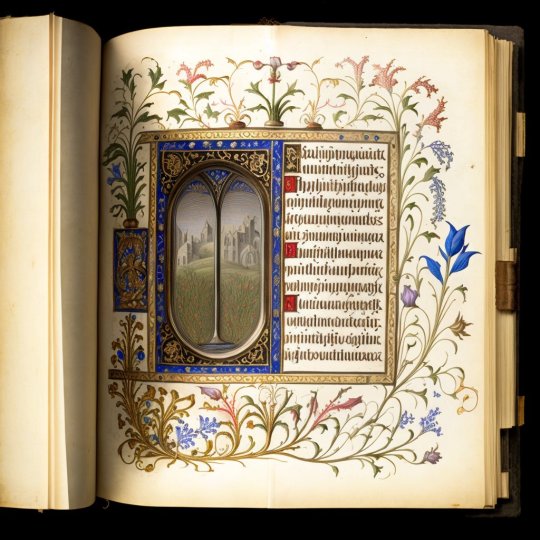
Image of a manuscript, generated in MidJourney by Suzette van Haaren
(a few words originally posted on Twitter on March 27, 2023 and then on my blog. It’s resonating there so I thought I would post it here too.)
I’ve been trying all morning to figure out what bothers me about these Mid journey-generated manuscripts without simply sounding like a Luddite, and I think I finally have it.
It’s because my interest in manuscripts is almost entirely about the humanity behind them. Who made them? Who used them and why? What happened to them after they were made? Where are they now? What did they mean in the past and what do they mean now?
A computer generated book doesn’t have any of that context. I’ve talked about the uncanny valley with regard to digitized manuscripts, and this is that, one step further. It’s one thing to digitize a manuscript in a way that elides its materiality, and a whole other thing to create manuscripts that don’t exist materially at all.
I think there are potentially interesting ways to use AI in my work. I’m interested in structure, and have been part of a project, VisColl, to develop models and software to build models of manuscripts. Could AI be used to combine structural models and digital images to create photorealistic imagery of existing manuscripts? Imagine an AI reconstruction of manuscripts cut apart and distributed by Otto Ege. Could it even generate pages that are lost as semi-realistic placeholders?
Just a few thoughts. I’m less interested in generating realistic looking manuscripts than in the potential to leverage the technology to help us understand the use and history of manuscripts that exist in the real world.
Added: If you’d like to hear me talk more about manuscripts and humanity, check out Coffee With A Codex, a weekly 30-minute program both live and posted to YouTube where I present a show-and-tell with books from the University of Pennsylvania’s premodern manuscript collections, and Inside My Favorite Manuscript, a weekly podcast I do in my own time where I talk to people who love manuscripts about manuscripts they love the most.
#medieval#medieval manuscripts#manuscripts#ai#otto ege#manuscript digitization#uncanny valley#midjourney#imfm#imfmpod#coffee with a codex#cwac
173 notes
·
View notes
Text
Episode 17: Kathryn Maude on politics, the queen as evangelist, and the 11th century Encomium Emmae reginae

British Library Add MS 33241, fol. 1v
In Episode 17 of Inside My Favorite Manuscript, Dot and Lindsey chat with Kathryn Maude about the 11th century Queen Emma, who was married to and had children with both the English king Æthelred the Unready and his successor the Danish king Cnut the Great. The resulting political situation was complicated, and the Encomium Emmae reginae can help us understand the lines that Emma was attempting to walk as her sons grew into adulthood and prepared to take the throne. The text survives in two copies, the earliest one of which is British Library Add MS 33241, believed to be the copy that was presented to Queen Emma herself. Kathryn walks us through the manuscript and we talk about both the politics and the materiality of this fascinating text.
Listen here, or wherever you find your podcasts.
Below the cut are more photos and links relevant to the conversation.
British Library Add MS 33241, aka Encomium Emmae reginae (digitized online)
Folio 1v, the presentation of the book to Queen Emma, with her sons peeking out from the margin.

A close-up of folio 1v focusing on Emma and her sons.

A close-up of folio 1v focusing on the scribe presenting the book. Note that his hands are covered with a cloth. The son's hand has been added.

A close-up of folio 1v focusing on the curtains
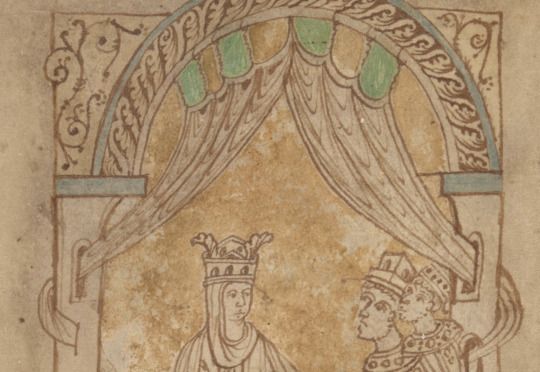
Boulogne-sur-Mer, Bibliothèque municipale, MS 11, miniature of Saint John, folio 107r

Close-up of folio 107r focusing on the curtains. Note Saint John holding the book with a cloth around it.

Copenhagen, Royal Danish Library, Acc. 2011/5, aka Courtenay Compendium, which contains the late 14th century copy of the Encomium Emmae reginae (apparently not digitized)
Doors of Durin, drawn by JRR Tolkien.

The Doors of Durin (Gates of Moria) from the Fellowship of the Ring film by Peter Jackson
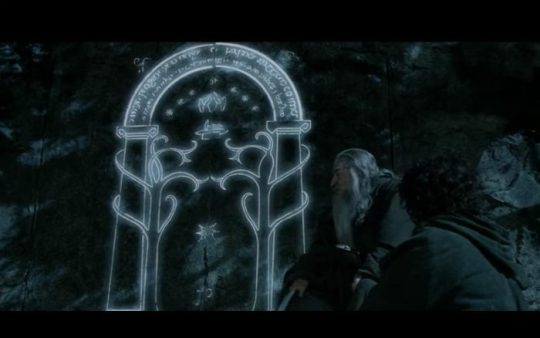
Middle Aged Women in the Middle Ages, edited by Sue Niebrzydowski. Gender in the Middle Ages, Volume 7. D. S. Brewer, 2011.
Folio 18r, Sven and Cnut's names are capitalized Half Uncials while the rest of the text is a regular Carolingian script.

Folio 48r, another example. Here Emma's name is capitalized at the top.

A king pointing to the text on folio 46r - "a manicule with a king attached" - with a note written beneath in the later middle ages, probably at Saint Augustine's Abbey in Canterbury.
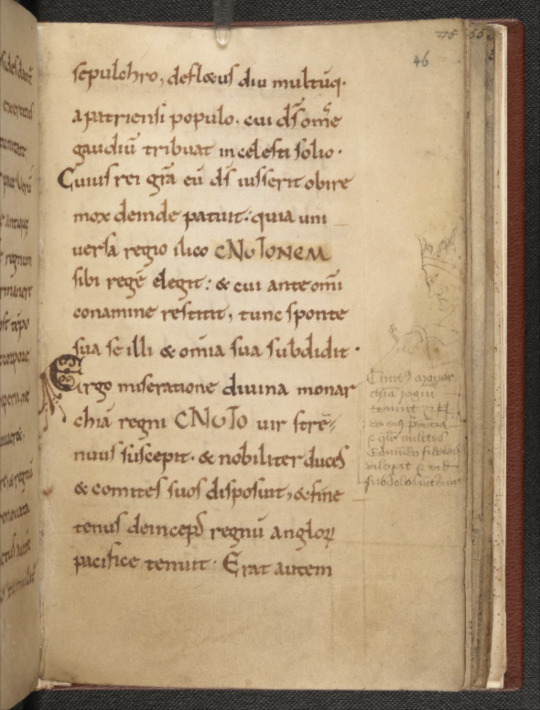
An ugly manicule (hand pointing at the text), folio 46v.

Folio 5r, a gloss in the margin.
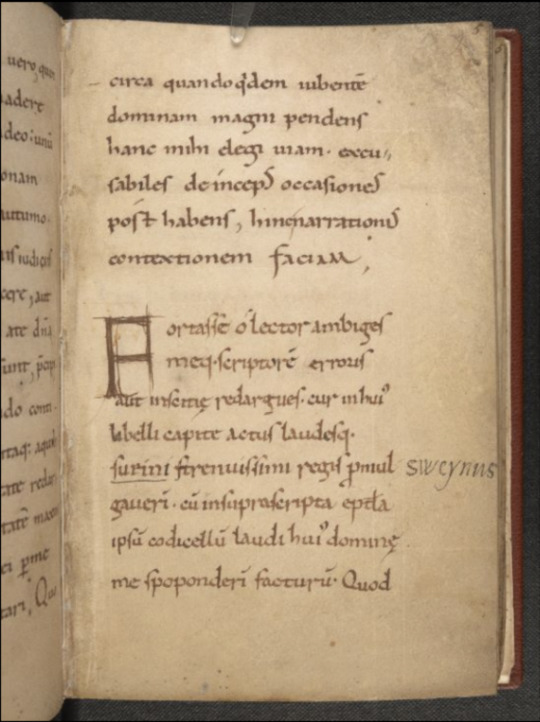
Folio 60r, an emoji in the margin of a couple of eyes to annotate the word oculi (Latin for eyes) in the text.

Close-up of the eyes.

Folio 58v, the parchment has been mended during the parchment preparation process, before the text was written.

Folio 54r, space was left for initials that were never added (the penciled M is probably contemporary but was never decorated)

Folio 2r, the first page of text, featuring a zoomorphic initial (i.e., an initial in the shape of an animal, in this case some sort of dragon and a fish eating each other) and colorful capitals.

Folio 8r, a zoomorphic initial R made of more critters eating each other. Good for a tattoo?
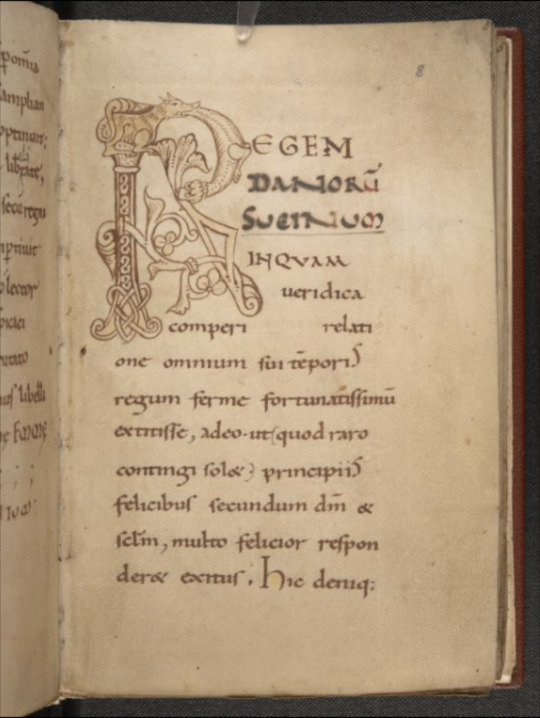
Folio 19v. "Explicit Lib[er] I" means the end of book 1, and "Incipit Secundus" means the beginning of [book] two (the second book).

Folio 50v, featuring Lindsey's ugly manicule
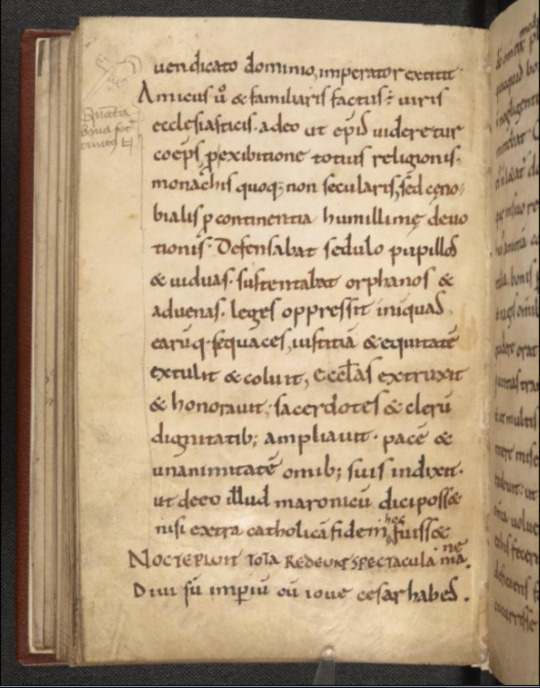
A close-up of the manicule
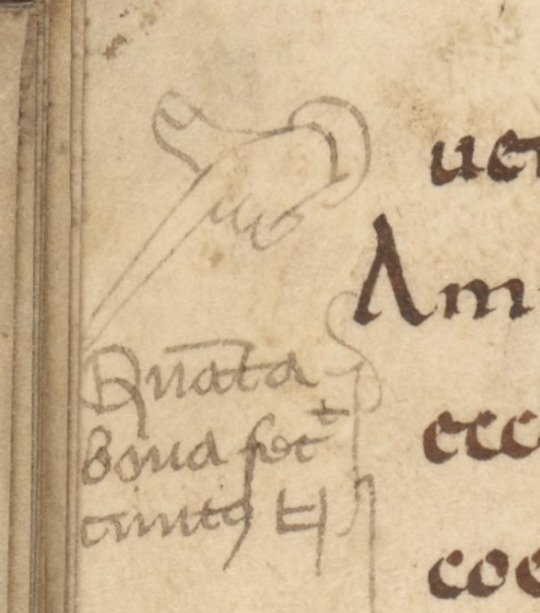
The Annunciation of Mary in Boulogne-sur-Mer, Bibliothèque municipale, MS 11
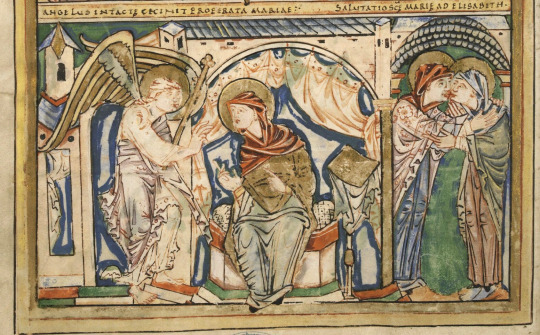
We talked to Brandon Hawk about the Vercelli Manuscript in Episode 7.
A hedgehog in the Luttrell Psalter (folio 19v)! (See it online)
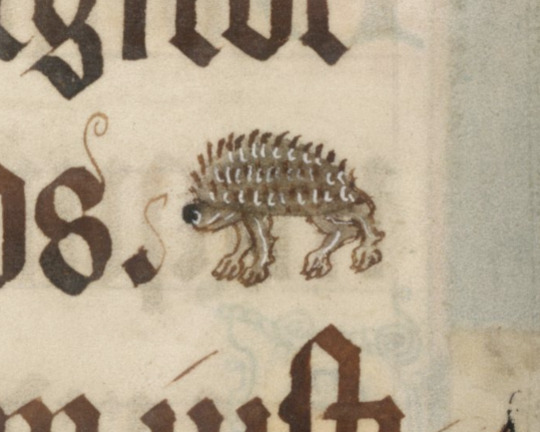
"The Social Centrality of Women in Beowulf: A New Context" Dot's very first published article!
#medieval#manuscript#queen emma#medieval art#art history#early england#latin#parchment#book history#rare books#inside my favorite manuscript#podcast#imfmpod
102 notes
·
View notes
Text
Episode 14: Aaron Macks on medieval calendars, the beauty of simplicity, and manuscripts as data
In Episode 14 of Inside My Favorite Manuscript, Dot chats with Aaron Macks about Harvard University, Houghton MS Typ 213, a gorgeous book of hours written and illustrated in Italy towards the end of the 15th century. We talk about the scribe and artist, the illuminations, the calendar, and discuss the practicalities of working with manuscripts as data.
Listen here, or wherever you find your podcasts.
Below the cut are more photos and links to the shows and books we mention during our conversation. Unless otherwise noted, the photos were taken by Aaron.
Record for MS Typ 213 in Harvard's Hollis catalogue
MS Typ 213 in the Harvard Library Image Viewer (incomplete, only eight pages are digitized)
MS Typ 213 in hand, so you can get a sense of its size (pretty small, but check out the gilt on that binding):

Comparing the section written earlier with the section written later (f. 13r and f. 87r):
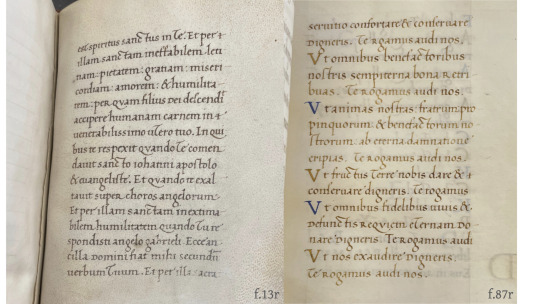
Stub of dyed parchment (note the slice in the neighboring page from when the dyed page was cut out):

Example of dyed parchment page: Folio 7v from the Rossano Gospels, the Good Samaritan.

Gothic medieval book of hours, Annunciation to the Shepherds (Philadelphia Museum of Art 1945-65-5, p. 147):
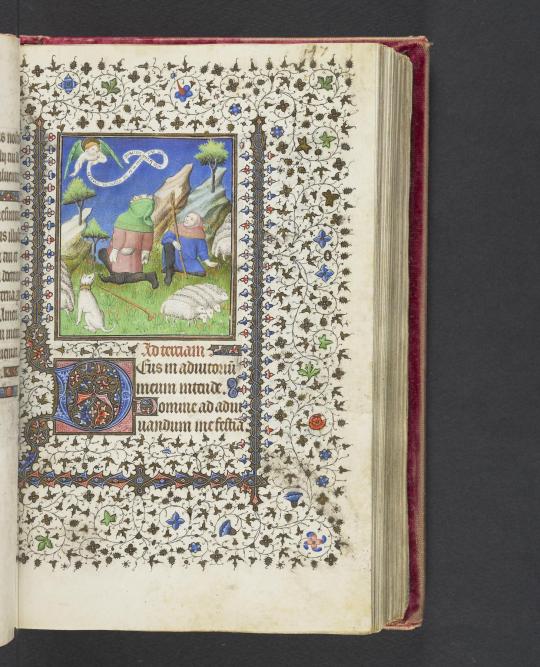
Start of Terce (f. 33r; photo from online):
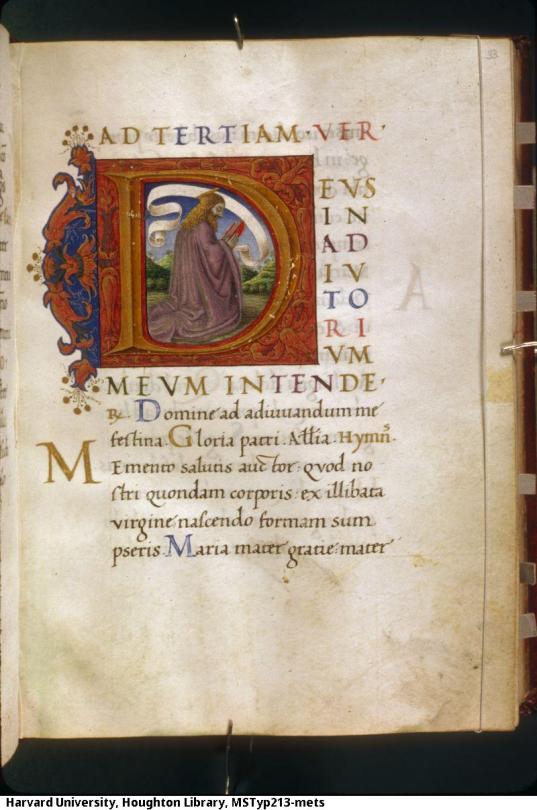
Start of the Office of the Dead (f. 92r):
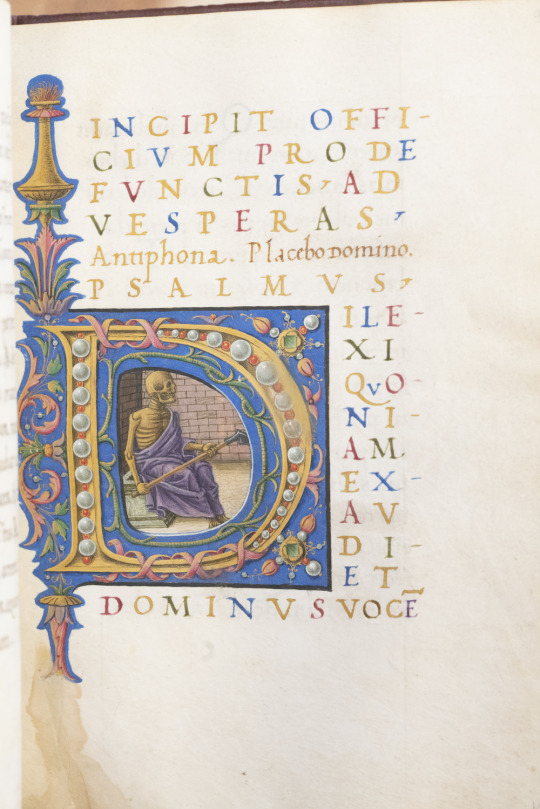
Start of the Office of the Holy Cross (f. 133r):
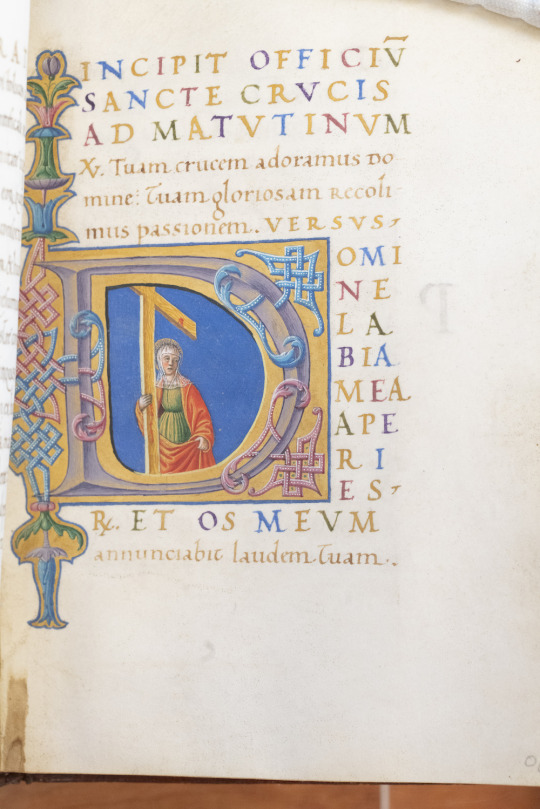
The Annunciation (f. 143r)

Prayers added at the end in a gothic script (f. 171v):

More of the prayers in the gothic script (ff. 178v-179r):
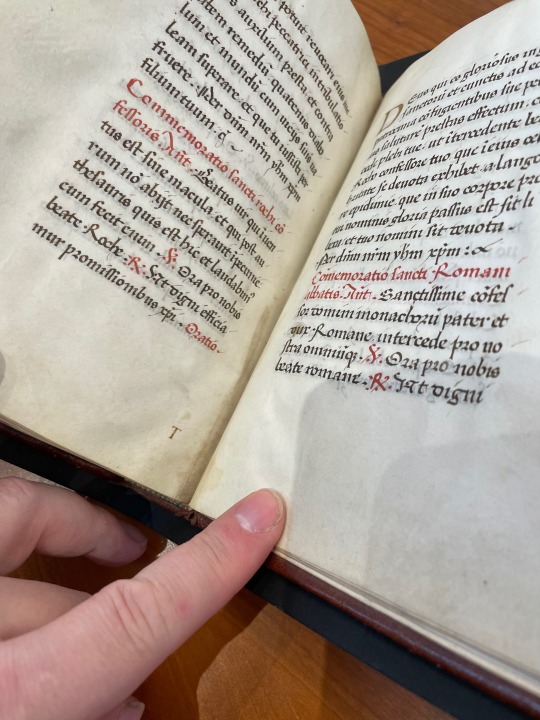
The Calendar (ff. 1v-2r):
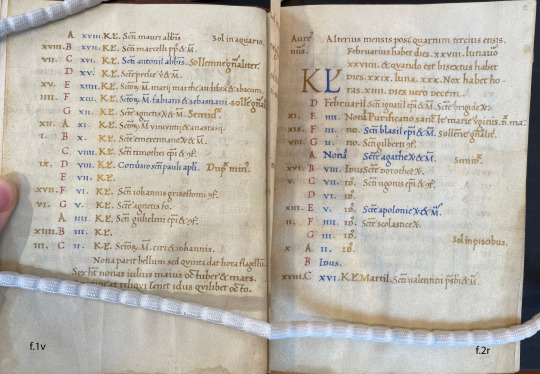
#medieval#manuscript#book of hours#year of hours#illumination#illustration#15th century#podcast#imfm#imfmpod#book history#rare books
41 notes
·
View notes
Text
Episode 16: Alex West on the poetry of ascetics, Sundanese, and palm leaf manuscript culture

A leaf from Bodleian Library MS Jav. b.3. (R), a manuscript from Indonesia written on palm leaves.
In Episode 16 of Inside My Favorite Manuscript, Dot sits down with Alex West to talk about Bodleian Library MS Jav. b.3. (R), the only surviving copy of the Sundanese poem Bujangga Manik (written ca. 1470-1500). We start with the story, a tale of an ascetic who travels around the island of Java searching for spiritual transcendence, and along the way we discuss the manuscript, religious, and artistic cultures that formed the poem.
Listen here, or wherever you find your podcasts.
Below the cut are more photos and links relevant to the conversation.
Bodleian Library MS Jav. b.3. (R) (digitized online)
Wikipedia page for the poem Bujangga Manik (out of date)
Where is Java?


The wooden box MS Jav. b.3. (R) is stored in:

Folio 7r, a representative view of the appearance of the palm leaf pages. Note the large hole in the center of the page and two smaller ones on the edges - string originally would have been thread through the holes, to hold the leaves together and to enable them to fan out. The text is inscribed, with no ink.
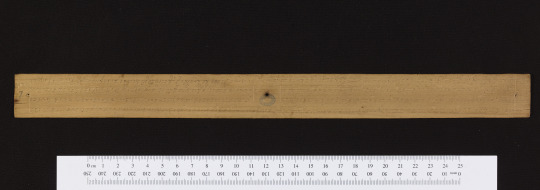
A close-up of the center of 7r, so you can better see the inscribed writing.
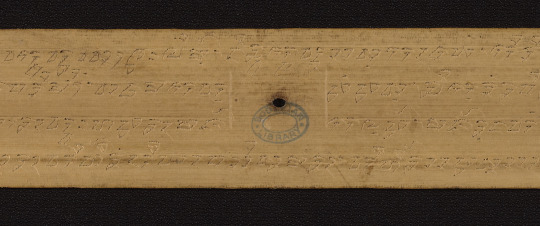
Folio 7v, the other side of 7r.

Dot misspoke during the podcast - the University of Pennsylvania palm leaf manuscripts are from India, not Thailand (the Thai manuscripts are written on paper). Here is one of them, Ms. Coll. 390 Item 82, Āhnikaprayoga, a digest of Hindu rituals from various sources written in 1822. In Sanskrit. Records here and here.
Front cover:
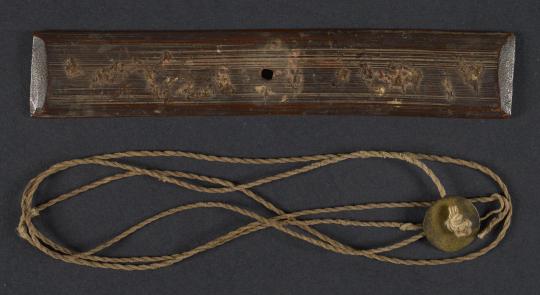
Folios 1v (top) and 2r (bottom)

An example of an inscription: The stone inscription of Kalasan, 778/779 ce, Central Java. National Museum of Indonesia, Jakarta, inv. no. D.147. Photo OD 7466, Kern Institute Collection, courtesy of Leiden University Library:
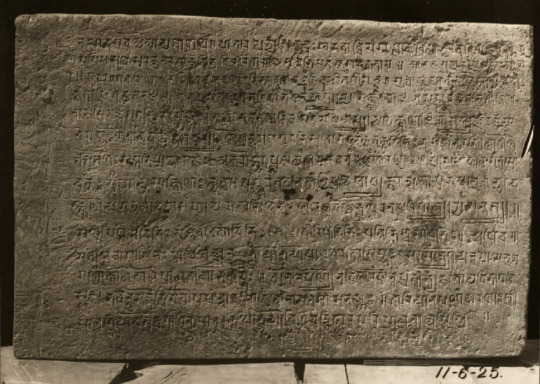
A. J. West, Bujangga Manik: or, Java in the fifteenth century: an edition and study of Oxford, Bodleian Library, MS. Jav. b. 3 (R). PhD Dissertation
Alex West's Medieval Indonesia on Medium.
Alex West on Patreon
#medieval#manuscript#inscription#palm leaf manuscript#sundanese#java#indonesia#southern hemisphere#asia#southeast asia#hemispheric middle ages#global middle ages#podcast#inside my favorite manuscript#imfmpod
34 notes
·
View notes
Text
Episode 21: Yvonne Seale and Heather Wacha on cartularies, the long life of manuscripts, and the Premonstrantensian Order

Soissons, Bibliothèque municipale, 0007, folios 46v-47r
In Episode 21 of Inside My Favorite Manuscript, Dot and Lindsey sit down with Yvonne Seale and Heather Wacha to talk about Soissons, Bibliothèque municipale, 0007, aka the Cartulary of Prémontré. Prémontré was the parent house of the Premonstratensian Order, an the cartulary contains legal documents related to the house and its holdings. In our conversation we talked about the house itself, people and events mentioned in the documents, and how the cartulary was written (and how it was changed later).
Listen here, or wherever you find your podcasts
Below the cut are more images and links relevant to the conversation.
Soissons, Bibliothèque municipale, 0007, digitized and online.
About the Premonstratensian Order.
Heather's first manuscript experience: the Chad Gospels. Here is folio 3r, the carpet page.

The Chad Gospels - this website documents the work of Bill Endres on the gospels and includes many different views of the manuscript, including 3D models and multispectral images.
Images of Soissons, Bibliothèque municipale, 0007:
Front cover:

Folio 1r: the "new" beginning of the manuscript, which were originally at the back of the manuscript but were moved forward when it was rebound.
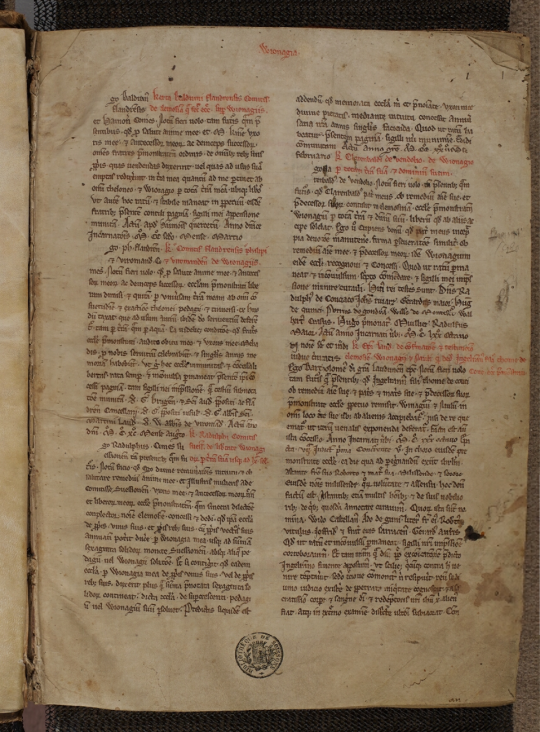
Folio 6r- the original start of the manuscript.
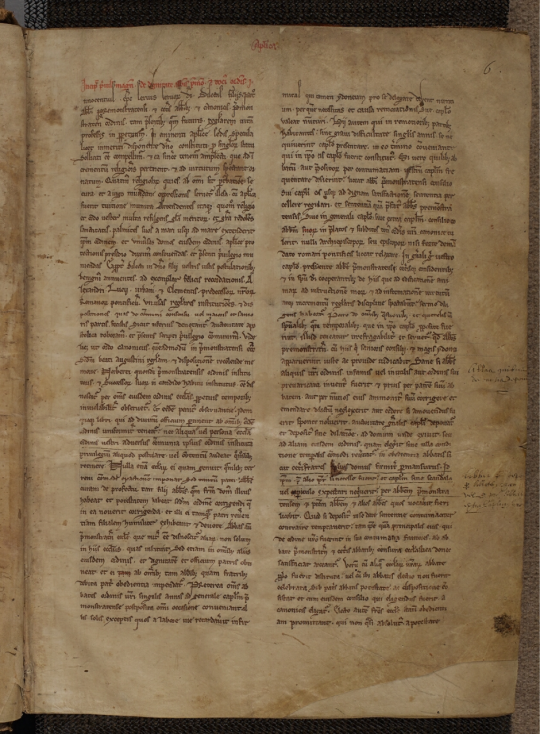
Folio 17r - the start of a section of documents.

Ink stains on 95v-96r:

Book of Kells, Christ Enthroned:
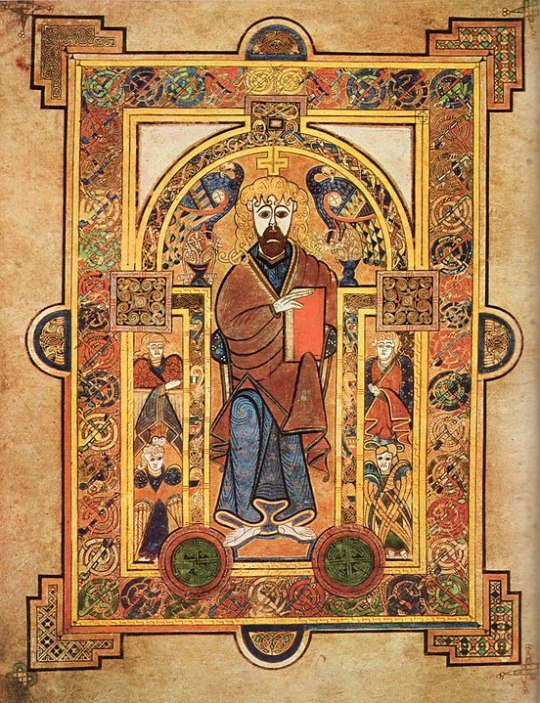
More about the Book of Kells.
The Cartulary of Prémontré. Edited by Yvonne Seale and Heather Wacha. Medieval Academy Books. University of Toronto Press, June 2023.
#medieval#manuscript#cartulary#12th century#13th century#legal#history of law#france#latin#podcast#inside my favorite manuscript#imfmpod
9 notes
·
View notes
Text
Episode 22: Laura Estill on Dramatic texts, Commonplace books, and Profane & debauched atheists
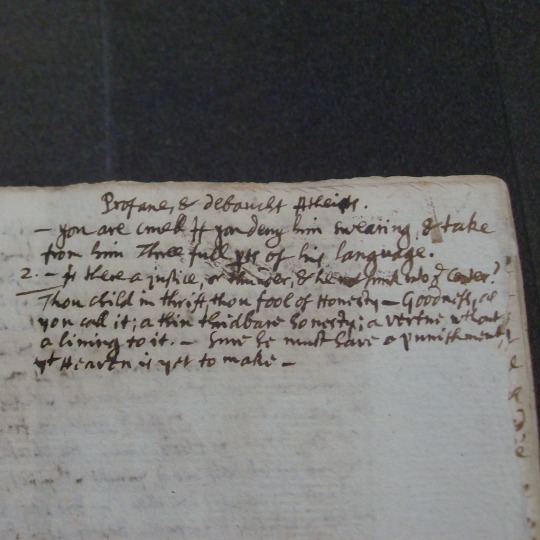
“Profane, & Debaucht Atheists” (Bodleian MS Sancroft 29, p. 1)
In Episode 22 of Inside My Favorite Manuscript, Dot and Lindsey talk with Laura Estill about Bodleian MS Sancroft 29. Archbishop of Canterbury William Sancroft (1617-1693) was an avid reader and collector of extracts from various works. MS Sancroft 29 is one of many manuscripts in his hand that survives; it is a dramatic commonplace books, that is, it contains bits and pieces of many plays that Sancroft read most of them from the century before Sancroft lived, including Shakespeare. We learned so much about the reception of drama in the seventeenth century, and we hope you enjoy listening to our conversation.
Listen here, or wherever you find your podcasts
Below the cut are more images and links relevant to the conversation.
English Treasury of Wit and Language (1655) by John Cotgrave, with marginal attributions added; image from https://www.journals.uchicago.edu/doi/epdf/10.1086/696155:

Bodleian MS Sancroft 97 with extracts from 2 Henry VI quarto (labelled Yorke & Lancaster “pt 1” in margin):
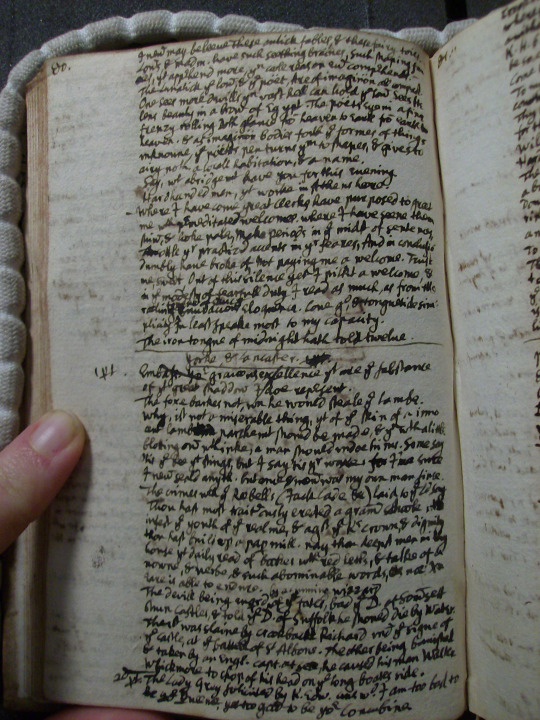
Foxe’s preprinted commonplace book, Pandectae Locorum Communium (1572), empty page (floods, water) – source, EEBO:
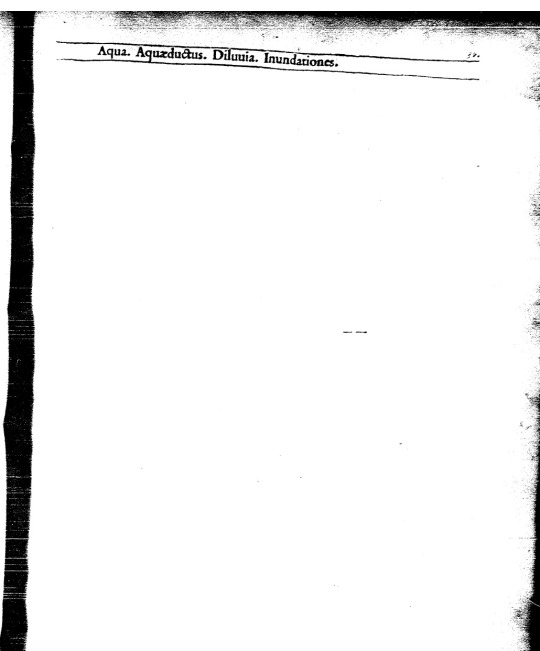
Foxe’s preprinted commonplace book, Pandectae Locorum Communium (1572), full page (tribulations, vexations)—source, EEBO:

Sancroft’s abandoned list of playes (Bodleian MS Sancroft 29, f. i):
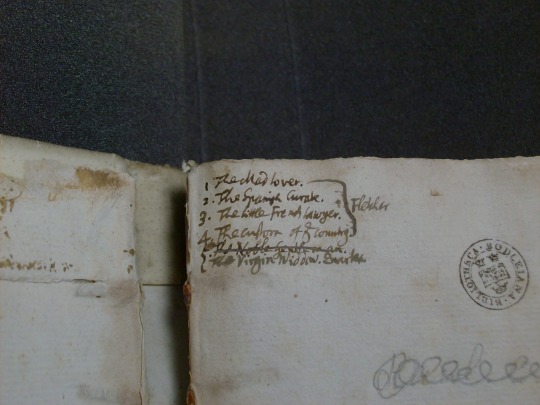
“Profane, & Debaucht Atheists” (Bodleian MS Sancroft 29, p. 1):
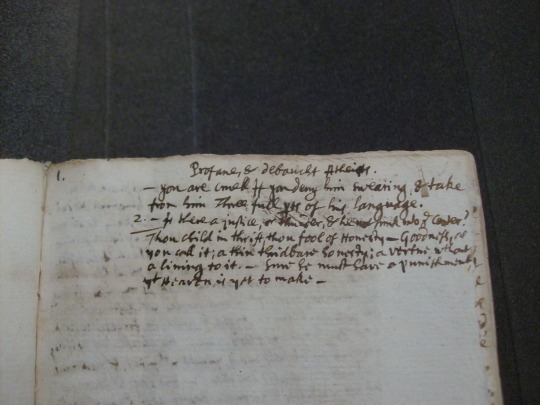
Extracts from Heywood’s A Maidenhead Well Lost (top) and Webster’s Devil’s Law Case (most of page), (Bodleian MS Sancroft 29, p. 69):

Epilogue to Jonson’s Every Man in His Humour in a verse miscellany (Bodleian MS Sancroft 53, p. 6):
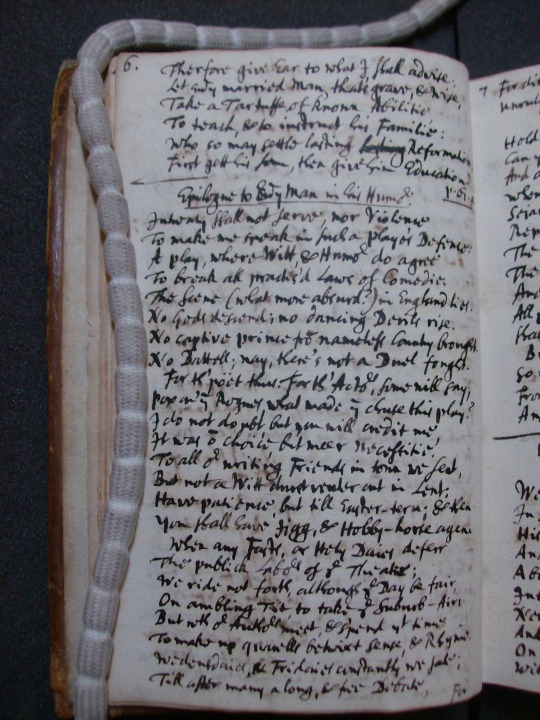
Links to projects mentioned in our discussion:
1664 Shakespeare Folio title page & Frontispiece:
1647 Beaumont and Fletcher Folio Table of Contents:
2 Henry VI quarto:
#manuscript#17th century#drama#dramatic texts#commonplace book#commonplace journal#journal#podcast#imfmpod
15 notes
·
View notes
Text
Episode 13: Maja Bäckvall on the Prose Edda, funky Norse illustrations, and the MCU Thor movies
Uppsala-Eddan, p. 47, Skaldic lists with figures dancing (?) in the margins.
In Episode 13 of Inside My Favorite Manuscript, Lindsey and Dot chat with Maja Bäckvall about Uppsala University DG 11, one of four surviving copies of the so-called Prose Edda written by Snorri Sturluson in the 1220s. The Uppsala copy was made in Iceland in the first quarter of the 14th century. We talk about what exactly the Prose Edda is, how this copy differs from the others, we look at the illustrations, and we also make Maja talk about THOR (the movies from the Marvel Cinematic Universe).
Listen here, or wherever you find your podcasts.
Below the cut are more page images and links to the shows and books we mention during our conversation.
Uppsala-Eddan, Uppsala University Library DG 11 (digitized on the Alvin portal)
Uppsala-Eddan, p. 50

Close-up on p. 50 - see the man's name written over his head (also there's a little hole in the parchment on the right, with the text from the page before visible through it)
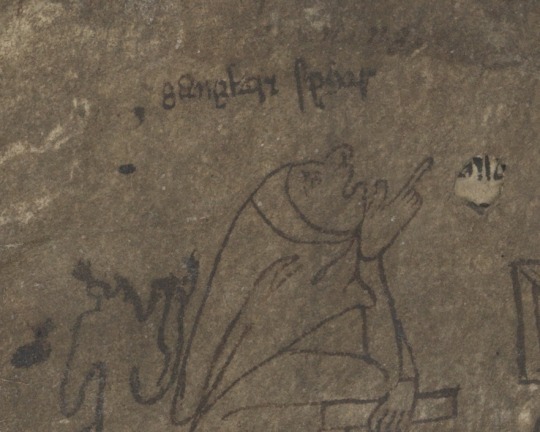
Another close-up on p. 50, where a later artist (or wishes-to-be-an-artist) is trying their hand at drawing their own king.

Uppsala-Eddan, p. 49 (the other side of p. 50), with illustration of a woman added to the manuscript in the 15th century:

Uppsala-Eddan, p. 47, Skaldic lists with figures dancing (?) in the margins.

Uppsala-Eddan, p. 42. The bottom portion of the page was left blank and filled in later, with text written upside-down. The staining may be from a chemical reagent used to bring out faded ink.
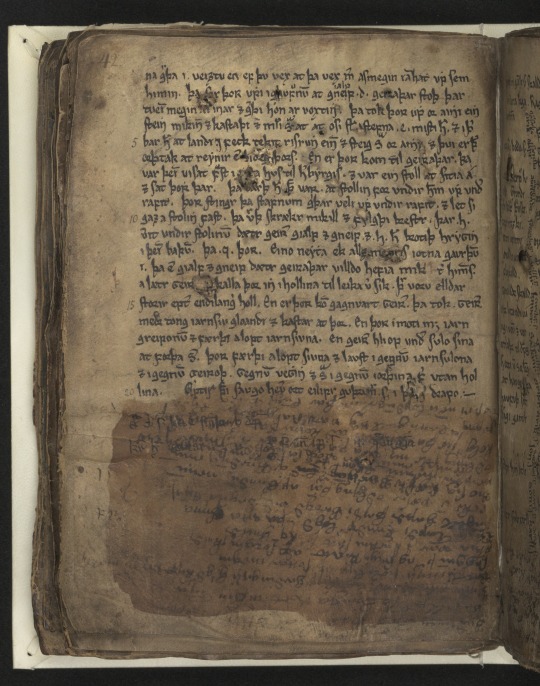
Uppsala-Eddan, p. 42, a close-up of the bottom of the page, reversed so the text is right-side-up
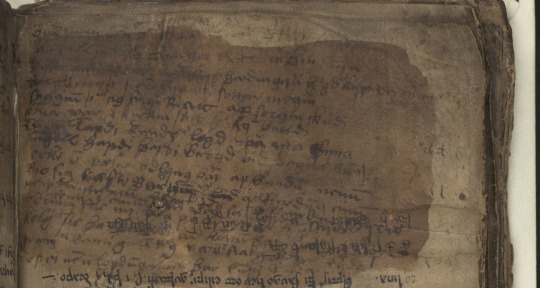
Uppsala-Eddan, p. 43, where the upside-down text continues in the bottom margin.
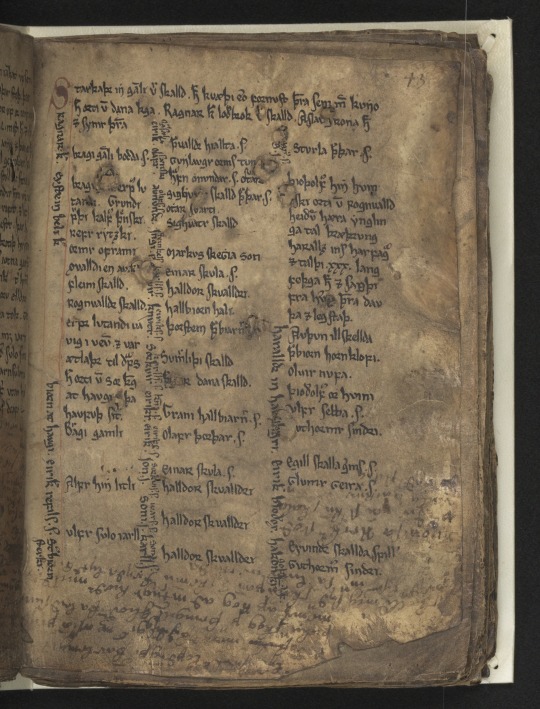
Uppsala-Eddan, p. 43, bottom margin reversed and cropped

Uppsala-Eddan, front flyleaf recto (original parchment with text and illustration added later)
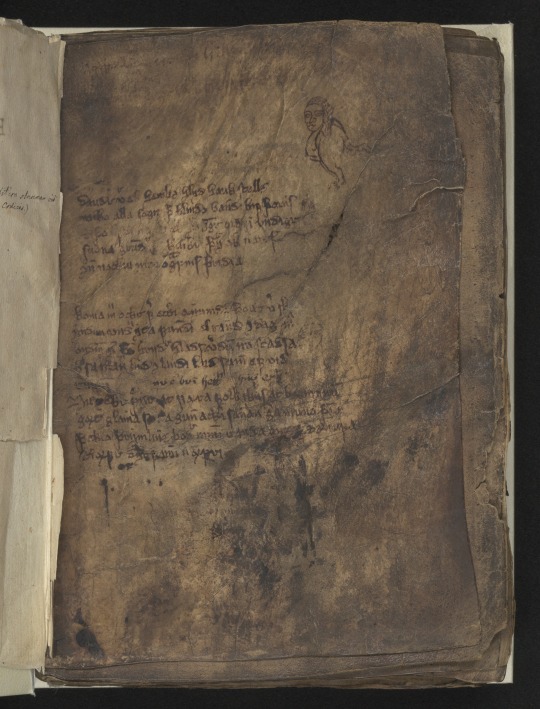
Uppsala-Eddan, p. 1, close-up of "sphinx-like creature" (I'm not really sure what that is!)
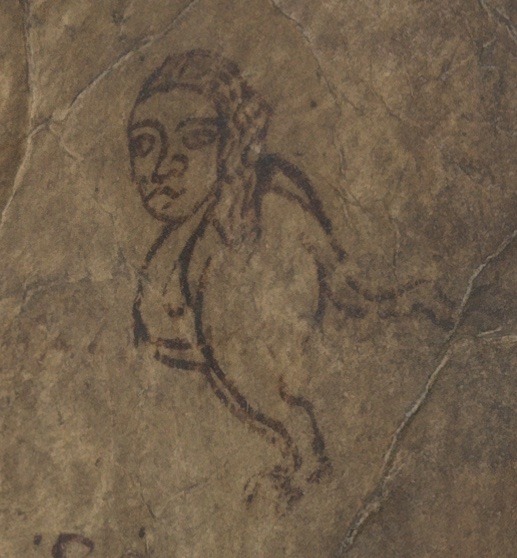
Uppsala-Eddan, front flyleaf verso with Bishop drawn in after the original text was written, probably at the same time as the text written on the recto side of the leaf
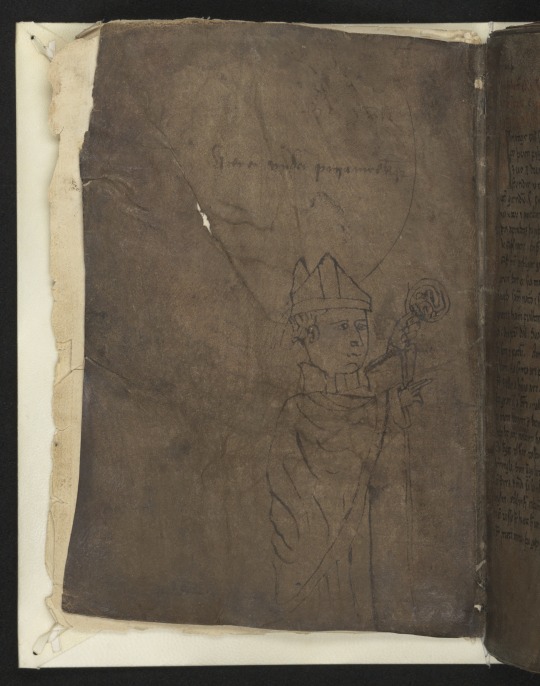
Uppsala-Eddan, p. 1, the first page of the Edda text.

Uppsala-Eddan, p. 1, a close-up at the text in red at the top of the page, which names the text as Edda and the author as Snorri Sturluson (both underlined)

Uppsala-Eddan, p. 1, close-up of the initial, which is quite fancy for an Icelandic manuscript

Thor movies in the MCU (IMDB)
Vikings TV show (IMDB)
The Northman (Dir. Robert Eggers, 2022) (IMDB)
πορφυρογέννητη, a fan fiction by neonheartbeat (posted with permission from the author)
Travel Light by Naomi Mitchison (book on Goodreads)
#medieval#manuscript#podcast#old norse#icelandic#icelandic manuscript#snorri sturluson#prose edda#skaldic poetry#vikings#thor#imfm#imfmpod
7 notes
·
View notes
Text
Episode 20: Paul Dilley on Papyrus, Manichaeism, and Multispectral Imaging

A photo of a page from one of the Medinet Madi Coptic Manichaean Codices taken under ultraviolet light.
In Episode 20 of Inside My Favorite Manuscript, Dot talks with Paul Dilley about one of the Medinet Madi Coptic Manichaean Codices. These seven papyrus manuscripts dating to the 4th and 5th centuries were discovered in Egypt in 1929, and they tell the story of a religion that was intended to draw from Christianity, Buddhism, Gnosticism, and other religions to create something new, but it was later crushed by Christian Roman emperors who considered it heresy. Our conversation ranges from the conservation of papyrus and the details of the beliefs of Manichaeism, to papyrus conservation and multispectral imaging.
Listen here, or wherever you find your podcasts
Below the cut are more images and links relevant to the conversation. Please note that there is an animated gif that switches between light and dark at one second intervals. Please be careful if you are sensitive to flashing lights.
These manuscripts have been minimally digitized, so we don't have many images to show.
The papyrus is quite damaged, and the text is so faded it can be difficult to read.
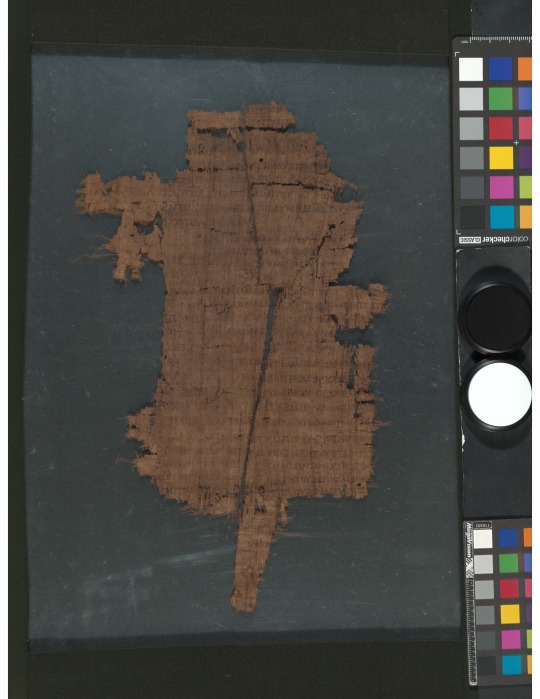
Multispectral imaging can help clarify the ink.

And here is a little animated gif that illustrates the difference between the two photos.
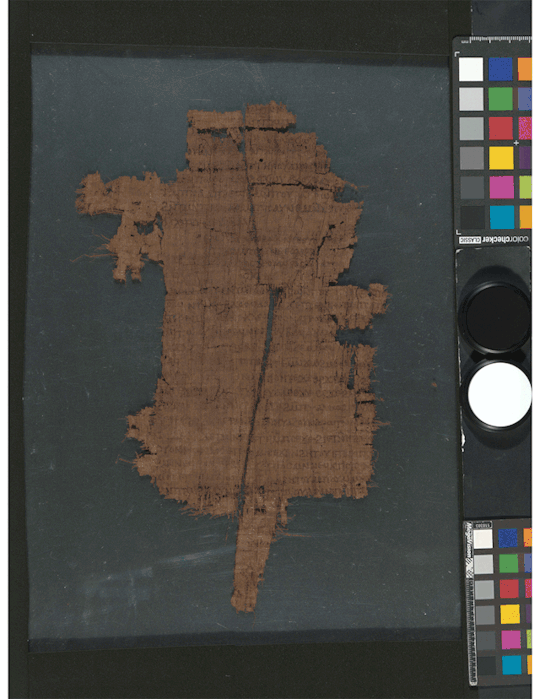
And finally, the photo of Paul ready to put the manuscript through the machine!

Dr Brent Seales, "Reading the Invisible Library: Virtual Unwrapping and the Scroll from En-Gedi" (Video on YouTube, February 2023)
#manuscript#coptic#manichaeism#ancient history#ancient religion#papyrus#4th century#5th century#multispectral#multispectral imaging#podcast#inside my favorite manuscript#imfmpod#imfm
6 notes
·
View notes
Text
This week’s episode... something completely different! Something special for the modernists in the room.
Episode 19: Elizabeth Fredericks on the Orkney Islands, the author’s process, and a very special bingo card

A page from the manuscript of George Mackay Brown's novel Greenvoe.
In Episode 19 of Inside My Favorite Manuscript, Dot and Lindsey chat with Elizabeth Fredericks about the manuscript for George Mackay Brown’s 1972 novel Greenvoe. The manuscript, which is now at the University of Edinburgh, was written on sometimes random bits of paper, and offers a fascinating look into the author's process for writing his first novel. Brown was born in Orkney and lived most of his life there, so we also talk about the Scottish and Orkney influences on the novel.
Listen here, or wherever you find your podcasts.
Below the cut are more images and links relevant to the conversation.
All photos taken at the University of Edinburgh Library by Elizabeth Fredericks.
Greenvoe is in print, and you can read it in paperback, hardcover, or e-book.
A typical page of notes, with multiple layers of changes - then cancelled completely!
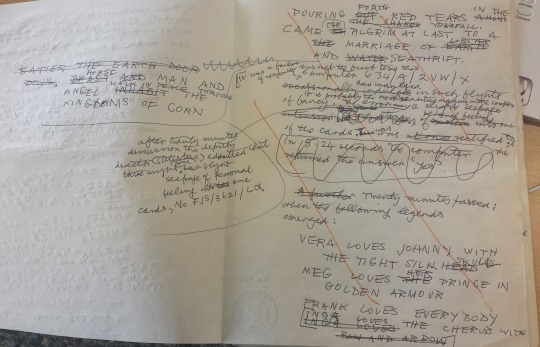
Page showing VERA crossed out, being replaced by A (= Alice)

Notes on some of the characters.
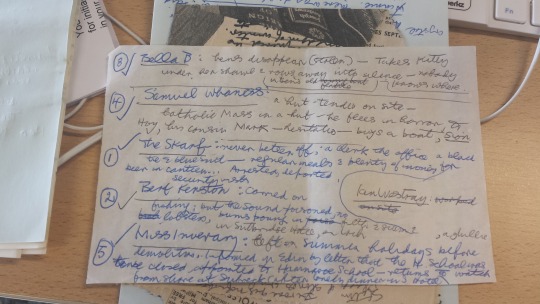
Handwritten page of novel text showing many changes, made in blue and black ink.

Planning notes, what each character is doing, for every day of the week.

Notes about the Fishing Village.
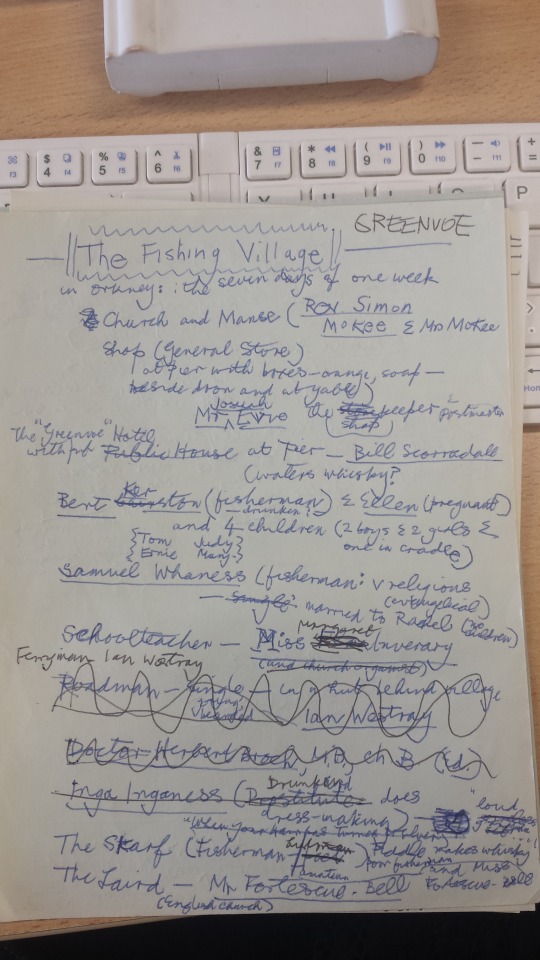
Notes on what happens in Greenvoe on Wednesday.
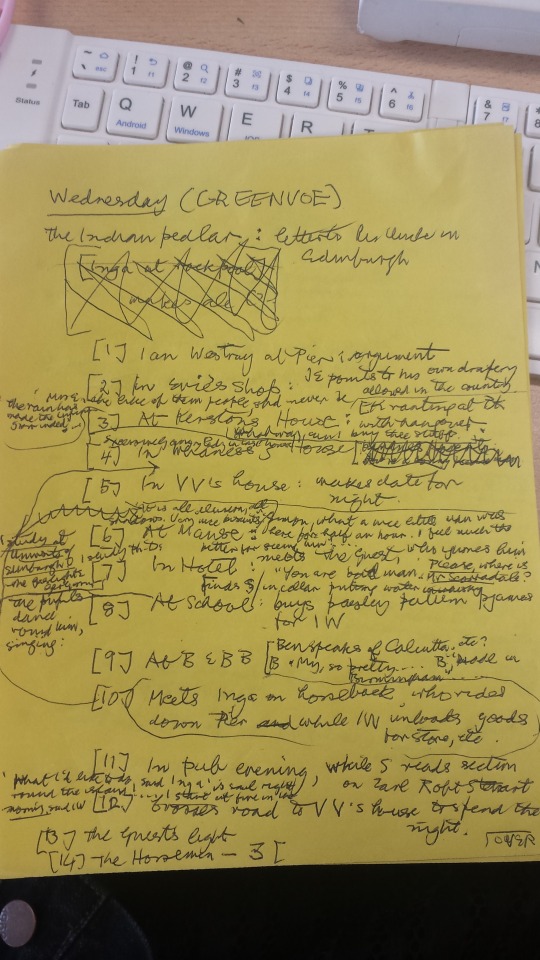
Stella! Aka "The Muse of Rose Street," whom Brown met in Edinburgh, was engaged to for a short time, and stayed in touch with until her death in 1985.

Ripped calendar page from June, 1970.

Notes written on a page torn from a newspaper, including the final day of the story - RESURRECTION.

#manuscript#modern#modern manuscript#george mackay brown#greenvoe#authorship#writers and poets#orkney#scotland#podcast#inside my favorite manuscript#imfmpod
24 notes
·
View notes
Text
Episode 9: Zoe and Mac from The Maniculum Podcast!
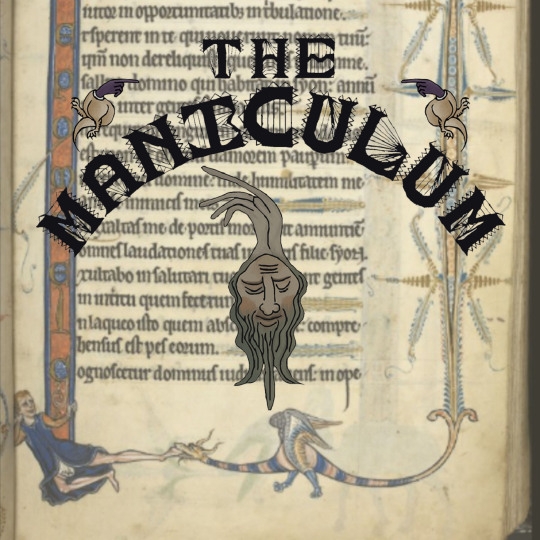
In Episode 9 of Inside My Favorite Manuscript, Lindsey and Dot chat with Zoe and Mac from the Maniculum podcast, where they suggest ways to adapt medieval texts for TTRPG’s (tabletop roleplaying games). We talk about marginalia, games, and Mac takes us for a dive into the Rutland Psalter. We also talk to Zoe about her storytelling for Pentiment, a medieval adventure video game by Obsidian Entertainment.
Listen here, or wherever you find your podcasts.
If you enjoyed this episode, you can listen to Dot and Lindsey over on The Maniculum Podcast! We talked about digital humanities, book history, and the secrets of women. Find links to listen here: https://www.themaniculumpodcast.com/episodes
Below the cut are page images and further reading from our conversation.
The Maniculum Podcast
The Maniculum Podcast on Tumblr
Pentiment
Book Historian Plays Pentiment! (Allie Alvis Pentiment play through)
Ludohistory Pentiment Playthrough Playlist on YouTube
Perna (oyster) - Der naturen bloeme - Jacob van Maerlant - KB KA 16 - 108v (via Wikimedia Commons)

Sebhat the Ethiopian scribe relates the story of Lazarus in Pentiment (via Obsidian on Twitter)

Saint George and the Dragon, UPenn LJS 102 f. 71r, early 20th century Ethiopian manuscript
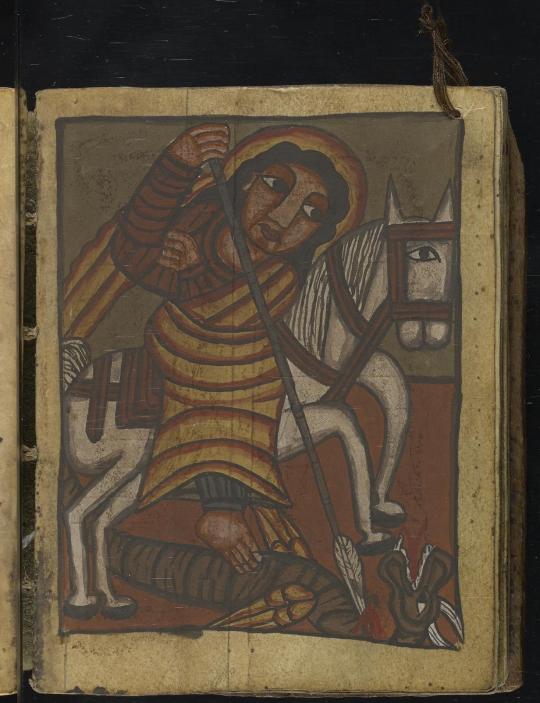
British Library Add MS 62925, The Rutland Psalter
f. 14r
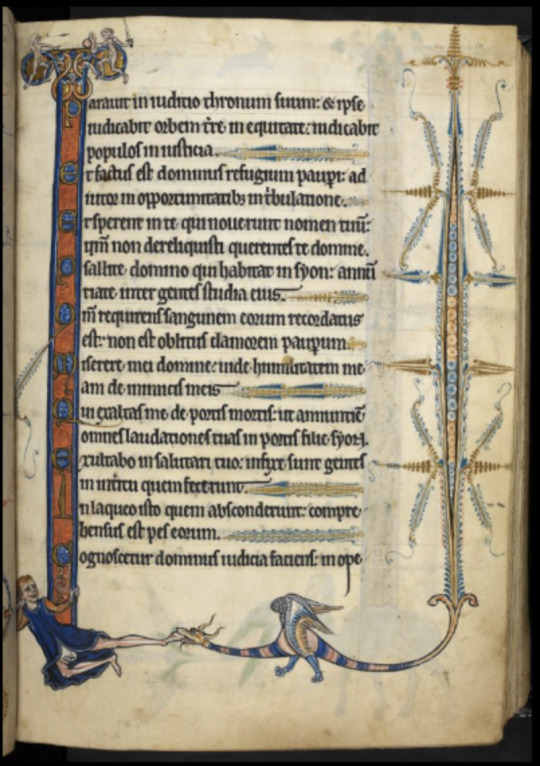
Close-up of bottom of 14r

Close-up of top of 14r
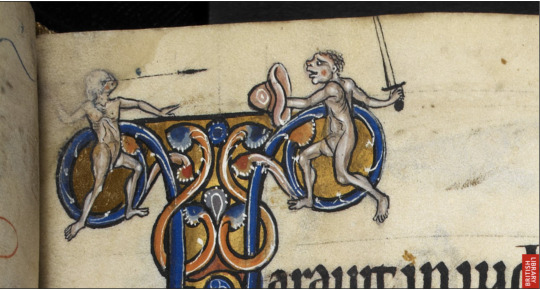
f. 57r

Close-up of bottom of f. 57r
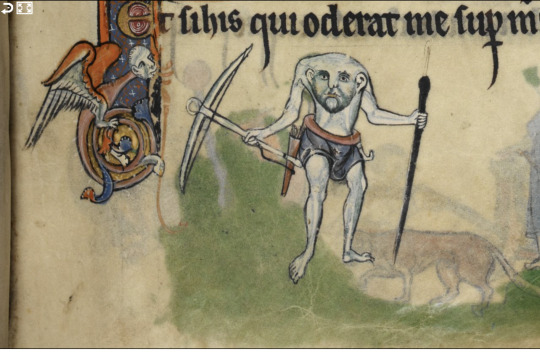
f. 88v
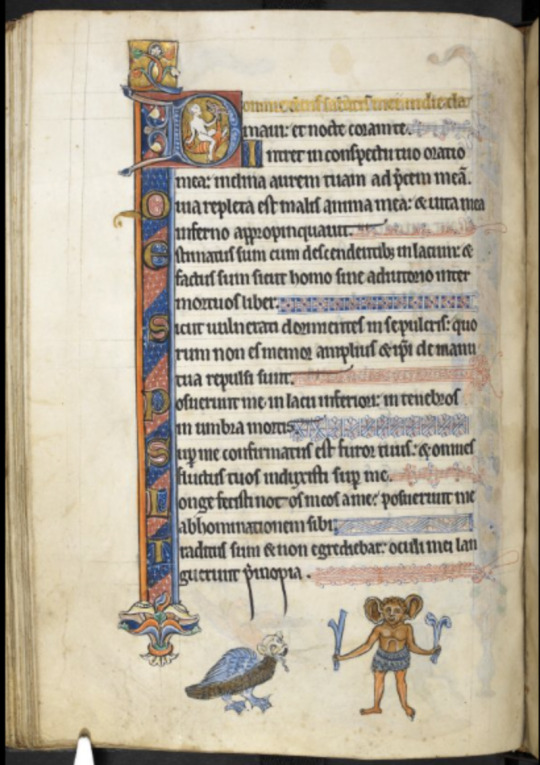
Close-up of bottom of 88v

Betsy Chunko-Dominguez (2016) “Playing on Timbrels”: the margins of the Rutland Psalter, Word & Image, 32:1, 131-141, DOI: 10.1080/02666286.2016.1146540 (PDF here)
f. 67r

Close-up of bottom (heh) of f. 67r
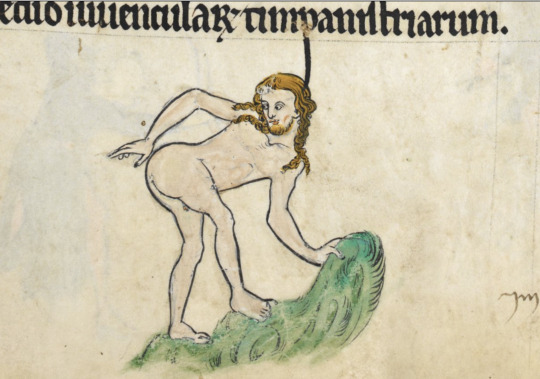
f. 66v
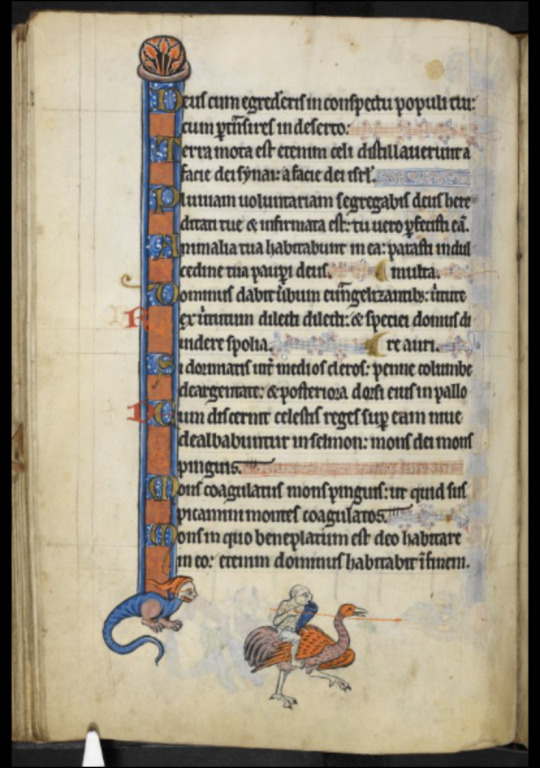
Close-up of bottom of f. 66v
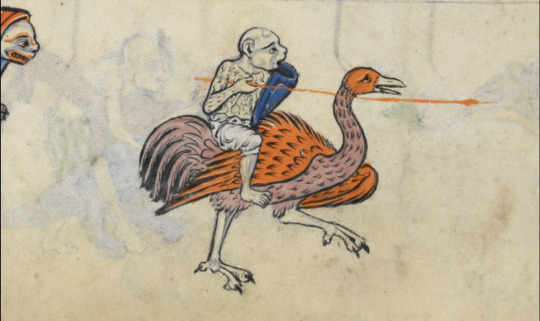
How the opening of ff. 66v-67r would approximately appear
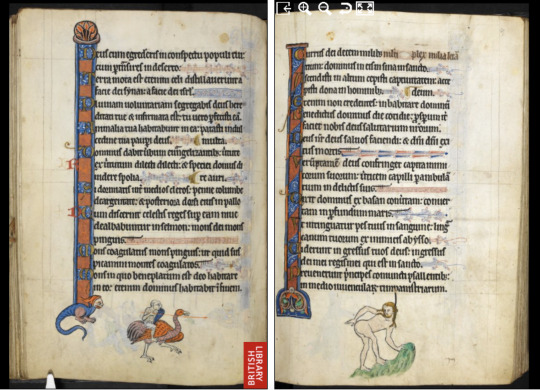
The Luttrell Psalter on the BL Website
The Luttrell Psalter film, mentioned at this point in the podcast, is embedded at the end of this post.
Susan Kim and Asa Mittman, Inconceivable Beasts: The ‘Wonders of the East’ in the Beowulf Manuscript. ACMRS, 2013. (Download PDF here)
British Library blog post on Cotton Tiberius B v
Maniculum D23 posts
f. 87v
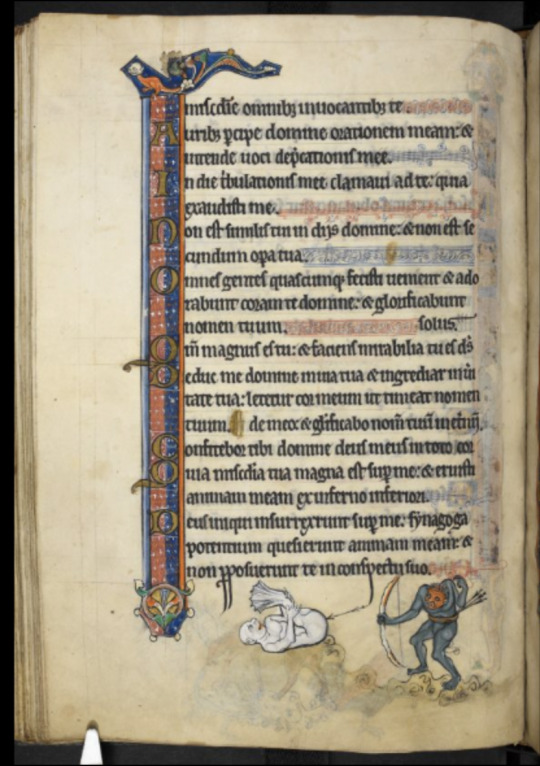
Close-up of bottom (heh) of f. 87v
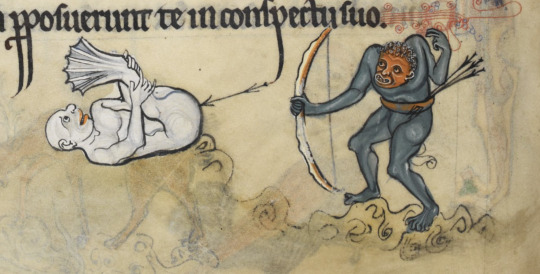
f. 64r
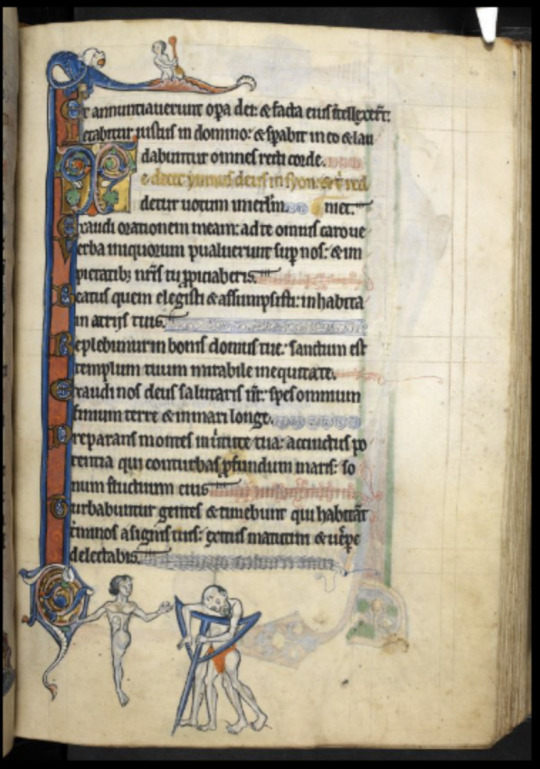
Close-up of bottom of f. 64r
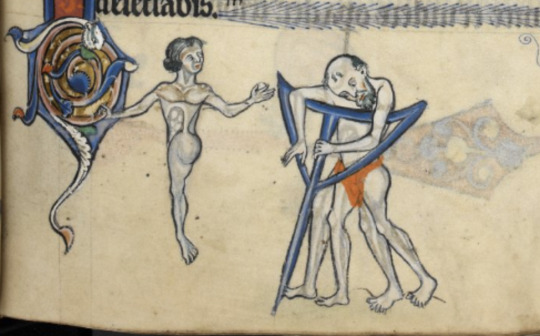
Close-up of top of f. 64r

The Book of Kells
f. 88r
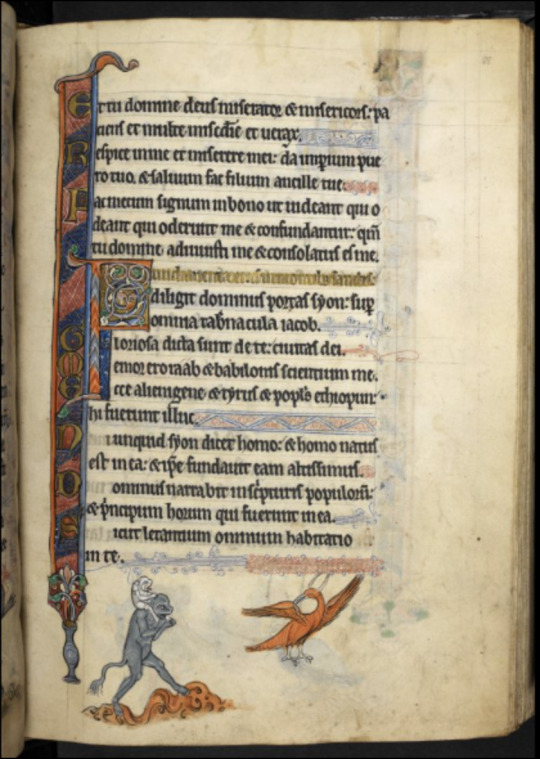
Close-up of bottom of f. 88r
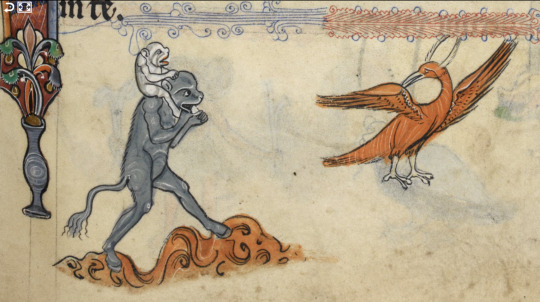
f. 16r

Close-up of bottom (heh) of 16r
(I promise I’m not doing this on purpose)
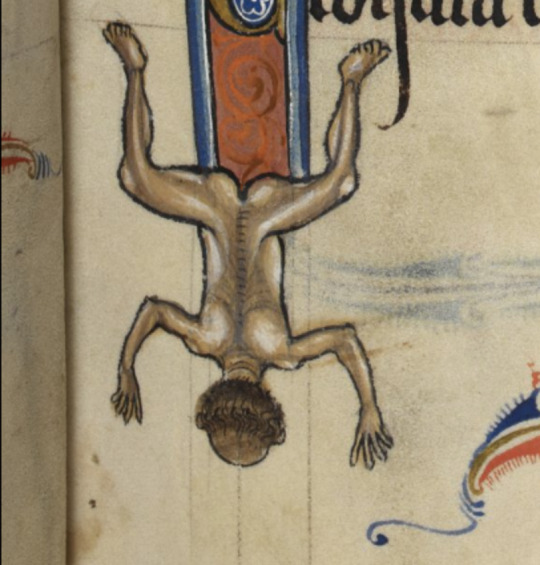
[Images in the 170s]
f. 5v, Calendar page for October
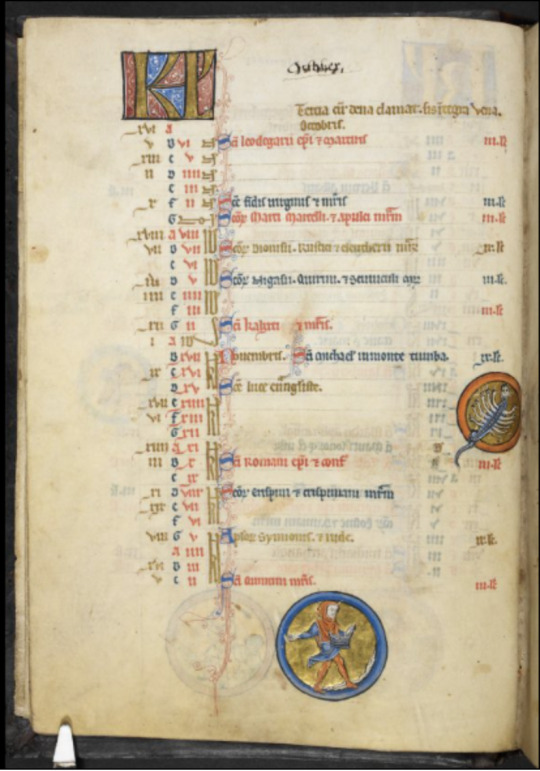
Close up of Scorpio zodiac sign

f. 3v, Calendar page for June
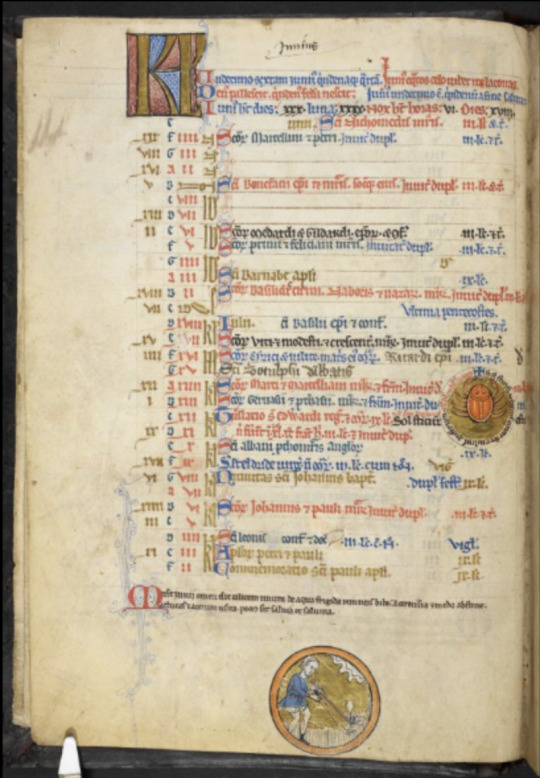
Close-up of Cancer Zodiac sign

f. 78v
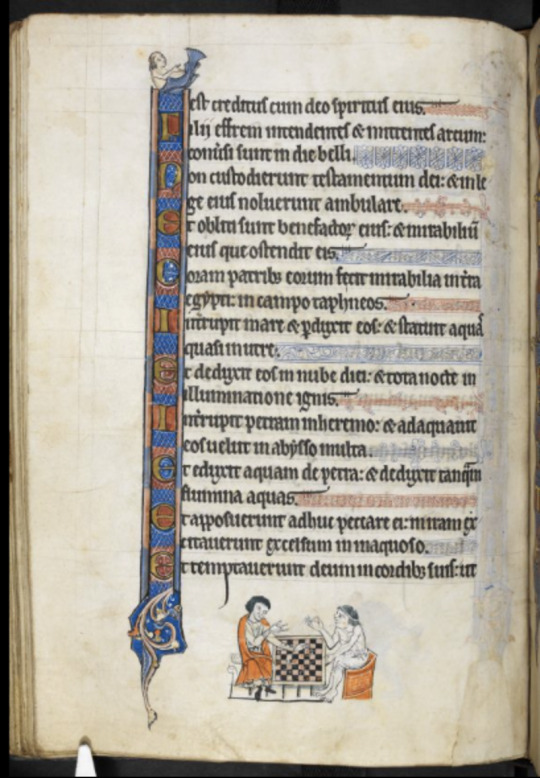
Close-up of f. 78v.

f. 70v

Close-up of f. 70v

Further reading on The Rutland Psalter:
Chunko-Dominguez, Betsy. “‘Playing on Timbrels’: The Margins of the Rutland Psalter.” Word & Image (London. 1985), vol. 32, no. 1, 2016, pp. 131–41 (PDF)
Morgan, Nigel. “The Artists of the Rutland Psalter.” The British Library Journal, vol. 13, no. 2, 1987, pp. 159-185 (PDF)
Luttrell Psalter Film on YouTube:
youtube
#medieval#manuscript#imfm#imfmpod#podcast#psalter#rutland psalter#marginalia#ttrp#pentiment#luttrell psalter#video games
67 notes
·
View notes
Text
Episode 8: Eric Johnson on manuscript fragments, Ohio, and the ethics of collecting
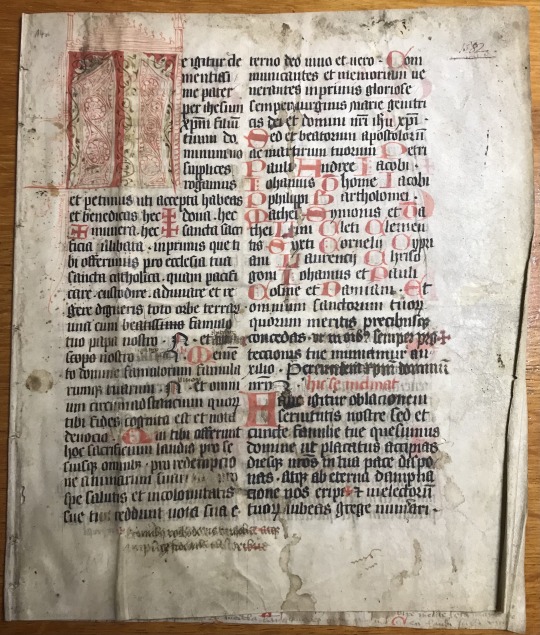
Folio 1r of a bifolium from a Missal, from the collection of Eric Johnson
In Episode 8 of Inside My Favorite Manuscript, Lindsey and Dot chat with Eric Johnson about two manuscript fragments from his own collection. We talk about the ethics of collecting fragments, Ohio’s place in the history of book breaking, and how manuscripts were used - both in their own time and through their afterlives.
Listen here, or wherever you find your podcasts.
Below the cut are more page images from the manuscript, and further reading.
The first fragment, from a Missal (book used for the Mass)
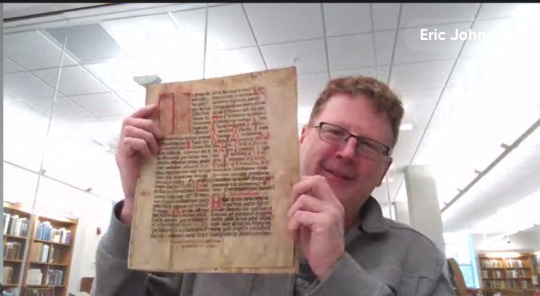
The Missal bifolium is two attached leaves, formed by taking a sheet of parchment and folding it in half down the middle. The front (recto) of the first leaf is on the right, and the back (verso) of the second leaf is on the left.

Here the bifolium is flipped over, so the verso of the first leaf is on the left and the recto of the second leaf is on the right.

Leaf 1 recto

Leaf 1 verso (little face drawn in the red Q at the top left column!)

Leaf 2 recto (with water stain)
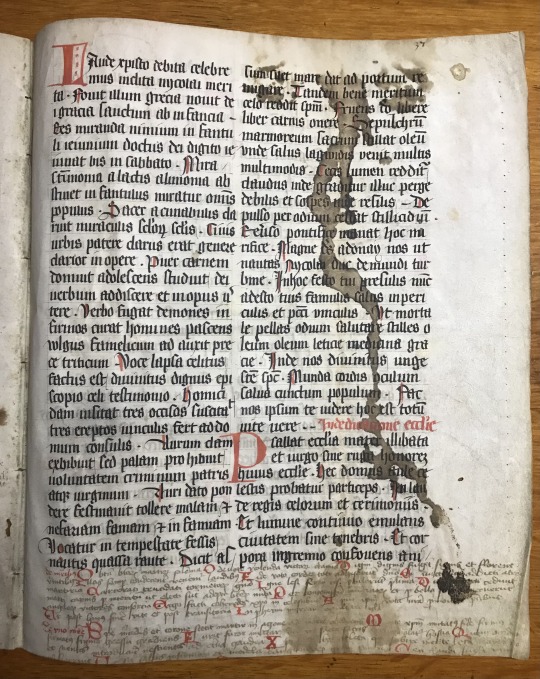
Leaf 2 verso (with water stain and floppy-eared pig-dog on the top right)
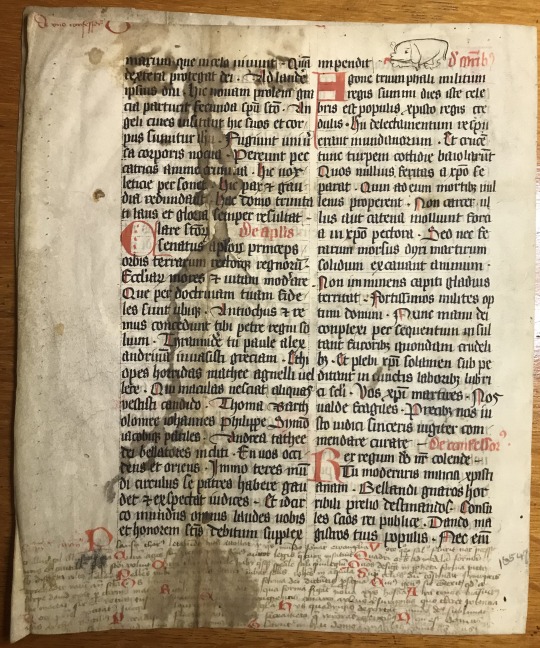
A close up of the floppy-eared pig-dog on Leaf 2 verso.

A close up of the little face in the red Q

And here is Eric holding up the second bifolium. It’s much smaller than the Missal fragment, from a manuscript that was designed to be carried around.

Leaf 1 recto on the right, Leaf 2 verso on the left
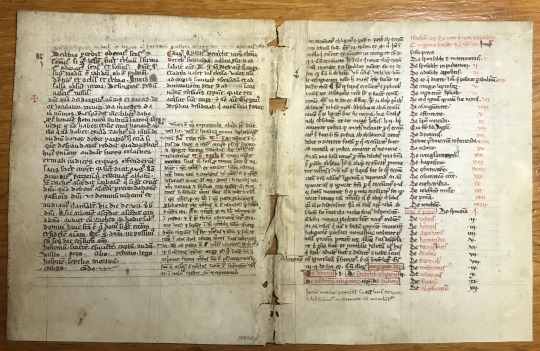
A slide that Eric put together pointing out all the various texts written on this bifolium. Even if you don’t know Latin or Paleography, you may be able to tell that a few different people wrote different sections of text.

Leaf 1 verso on the left, Leaf 2 recto on the right. On these two pages the different scribal hands may be more obvious (note the lighter areas on the top left of both pages)
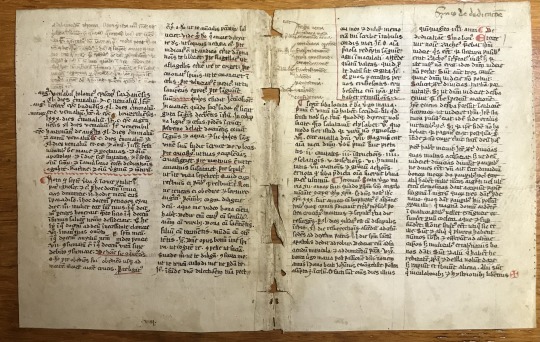
And here are the texts identified.

Leaf 1 recto
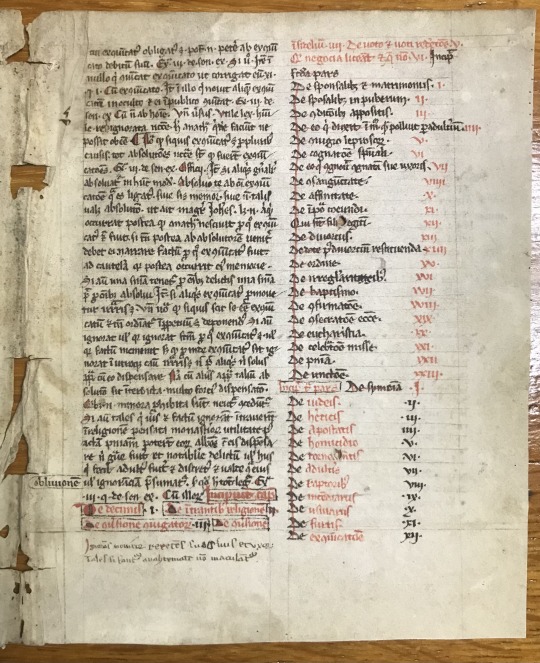
Leaf 1 verso
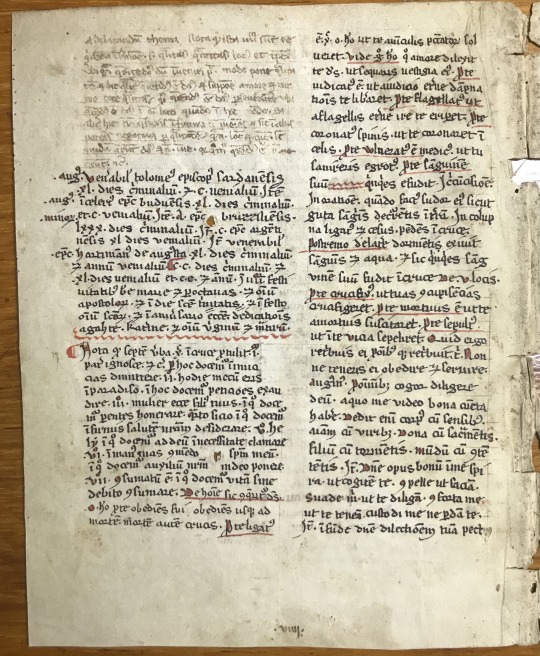
Leaf 2 recto

Leaf 2 verso
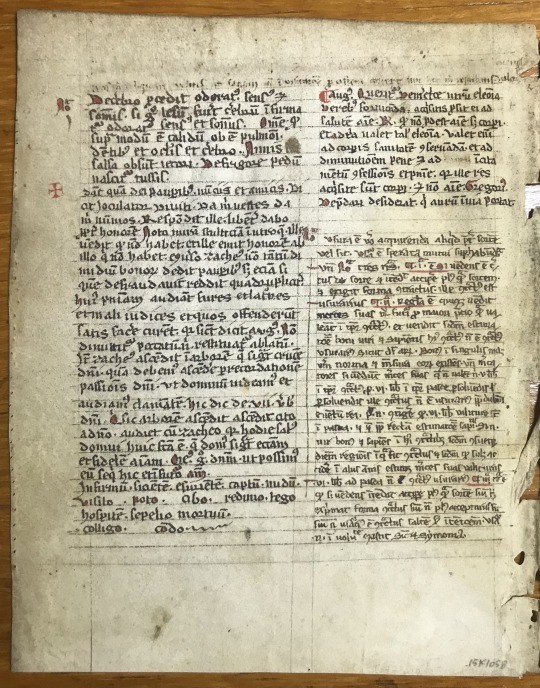
Some projects mentioned during our conversation:
Fragmentarium: Laboratory for Medieval Manuscript Fragments
Lisa Fagin Davis, Reconstructing the Beauvais Missal
6 notes
·
View notes
Text
Episode 11: Stephen Hopkins
In Episode 11 of Inside My Favorite Manuscript, Lindsey and Dot chat with Stephen Hopkins about Junius 11, one of the four surviving Old English poetic codices. We talked about a lot of things, including Genesis A & B, the strangeness of an Old English Exodus, horror, and nipples (yes, nipples!), and we laughed more than we have in a while.
Listen here, or wherever you find your podcasts.
Below the cut are more page images and further reading.
Bodleian Junius 11 online
"The Story of Caedmon's Hymn" on the British Library website
The Old English Illustrated Hexateuch (British Library Cotton Claudius B iv)
Brandon Hawk on Inside My Favorite Manuscript talking about the Vercelli Book (one of the other Old English poetic codices that survives)
Junius 11 outside front cover:
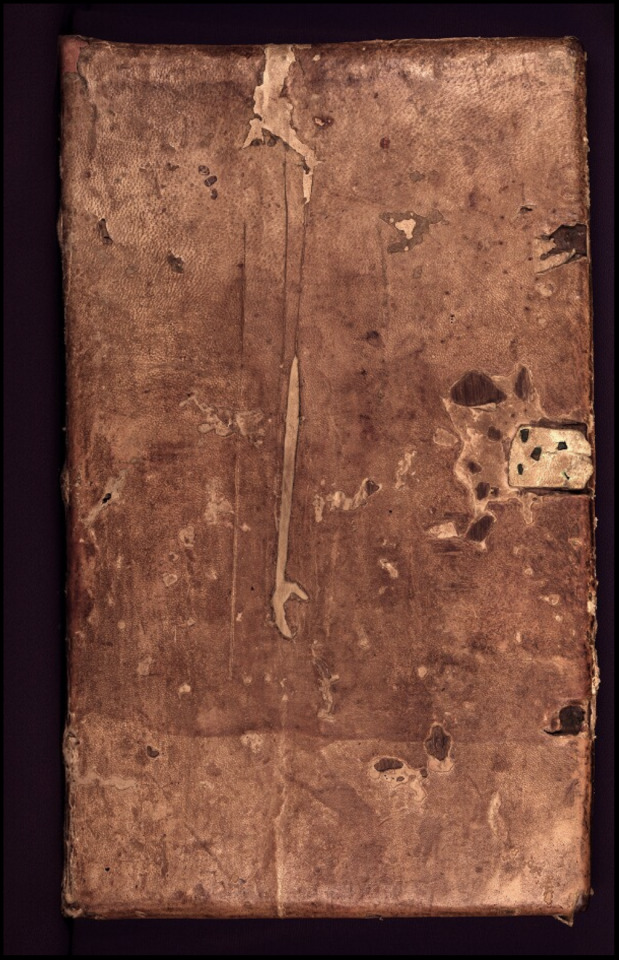
Junius 11 inside front cover (note the break down the center of the wooden board):
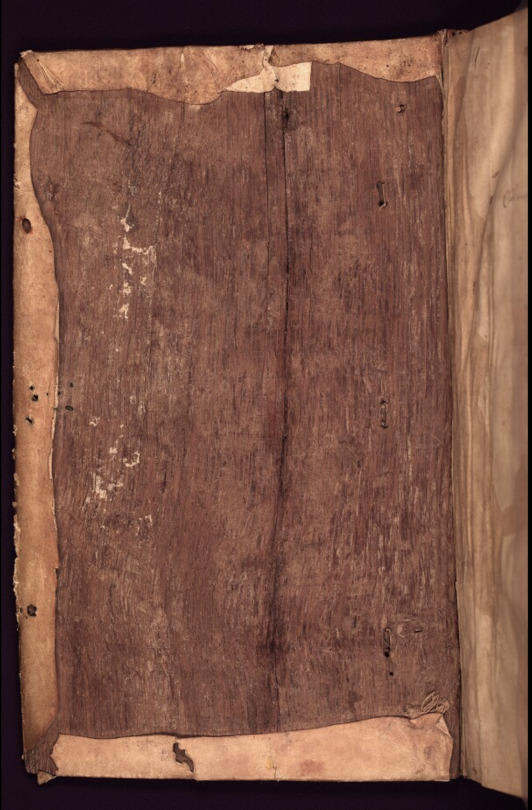
Junius 11, page ii: the very first image on the very first page.
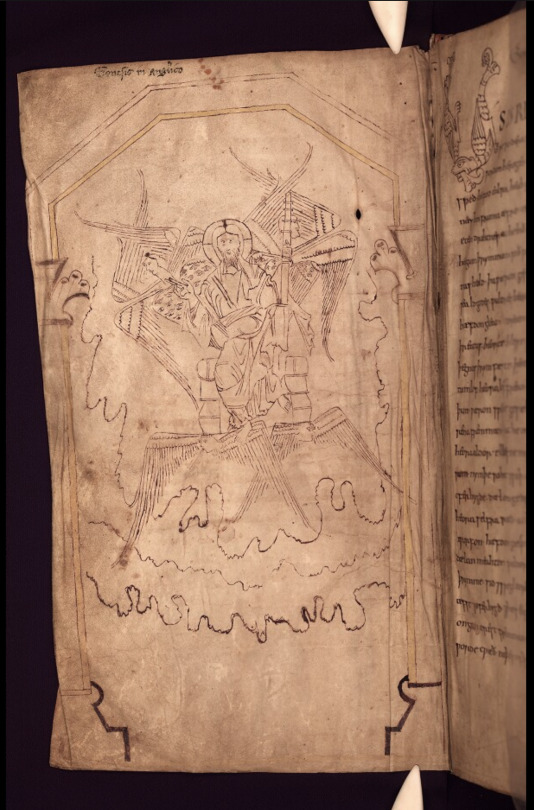
Junius 11, p. 197 with space left for an illustration that was never added

Dream of the Rood (page on Wikipedia)
Junius 11, page 2: Creation of the angels

Junius 11, page 3: The fall of the angels
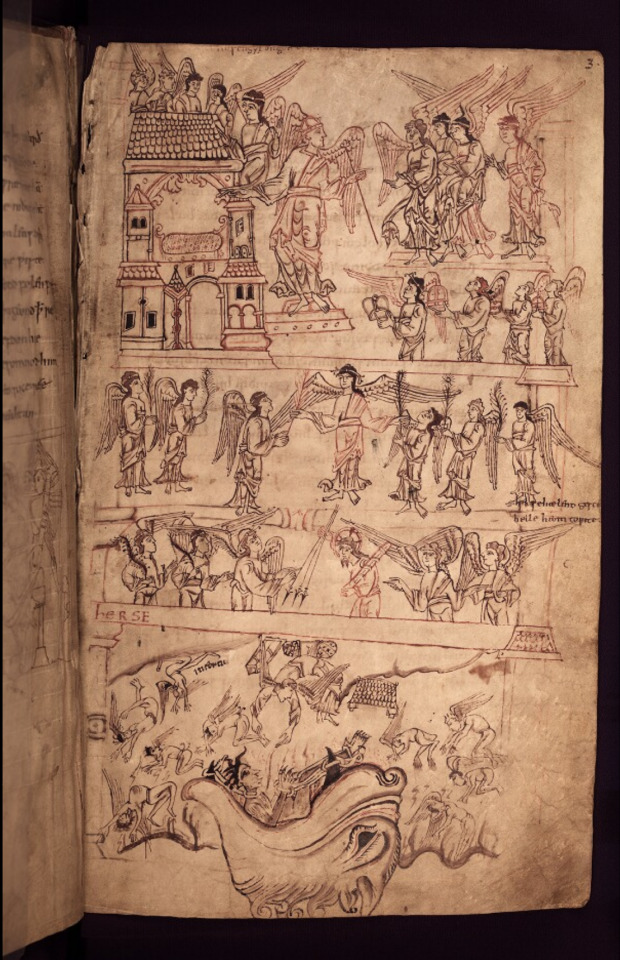
Winchester Psalter (on the British Library website)
Pauline Baynes (tribute website)
Hunterian Psalter (on the University of Glasgow website)
Genesis B (page on Wikipedia)
Junius 11, page 13: the first page of Genesis B, the creation of Adam and Eve

Junius 11, page 6: The start of creation
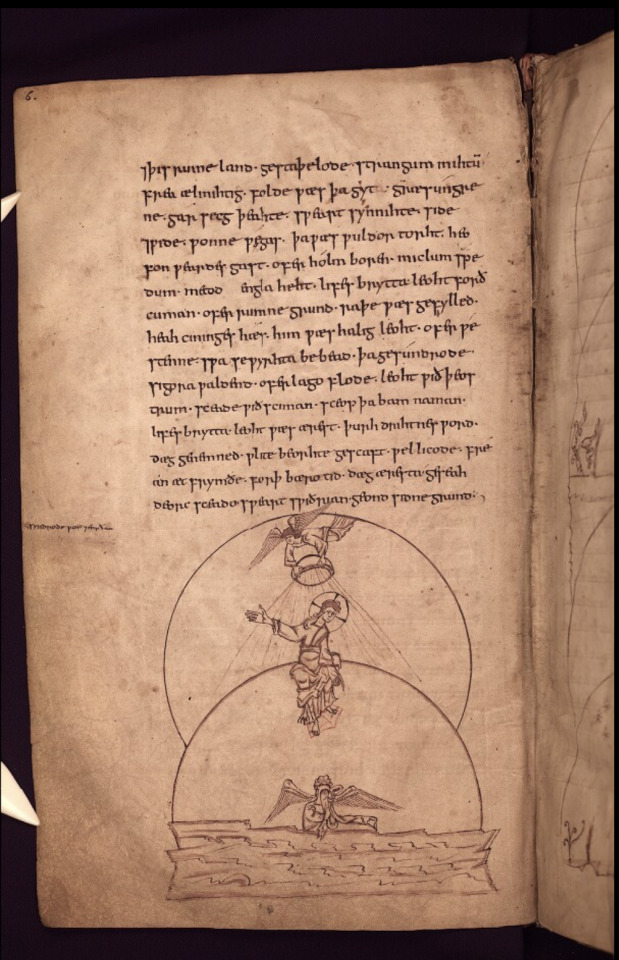
Junius 11, page 7: More creation

Junius 11, page 24: Temptation of Eve
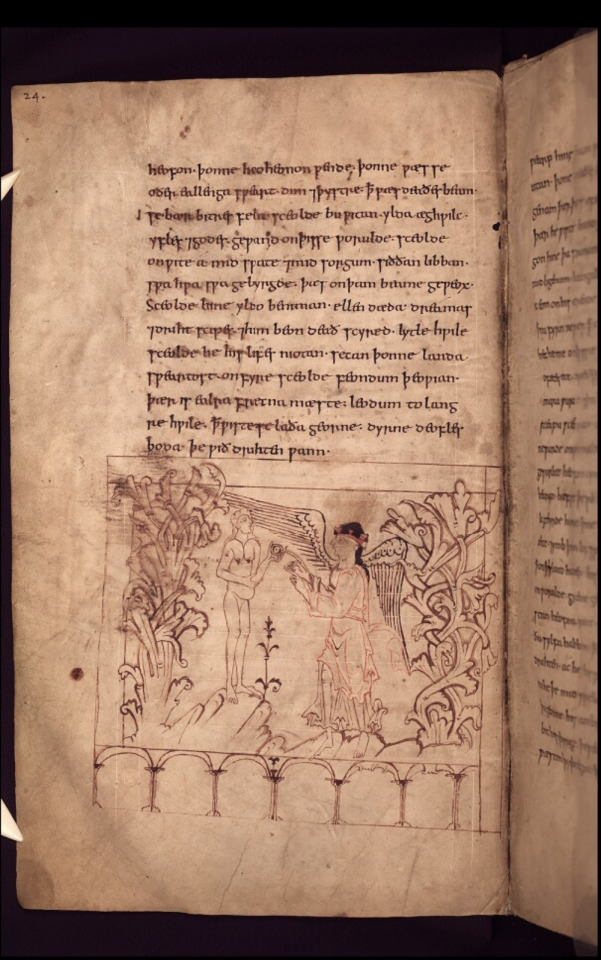
Junius 11, page 31: Eve offers the fruit to Adam and he eats it.
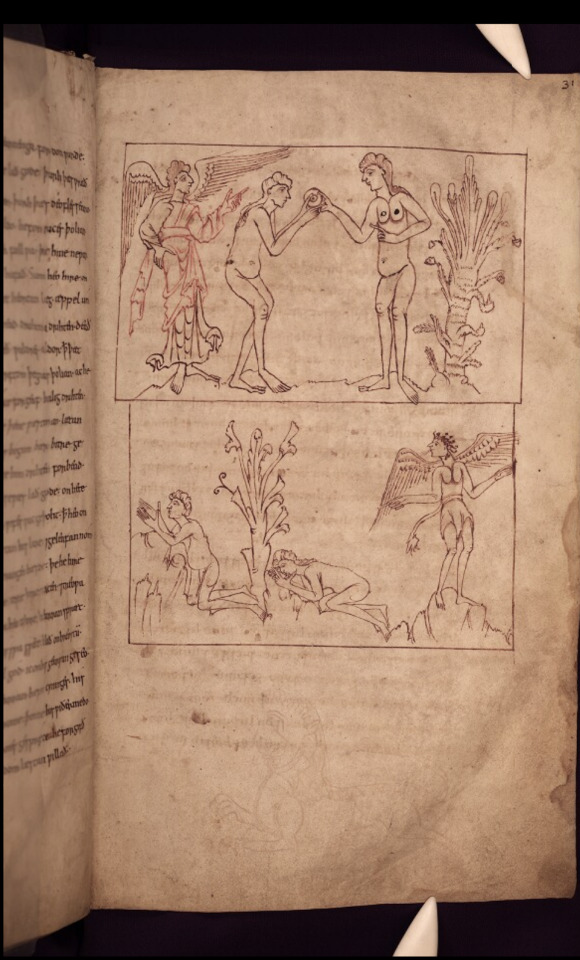
Junius 11, page 31, close up of lion in bottom margin
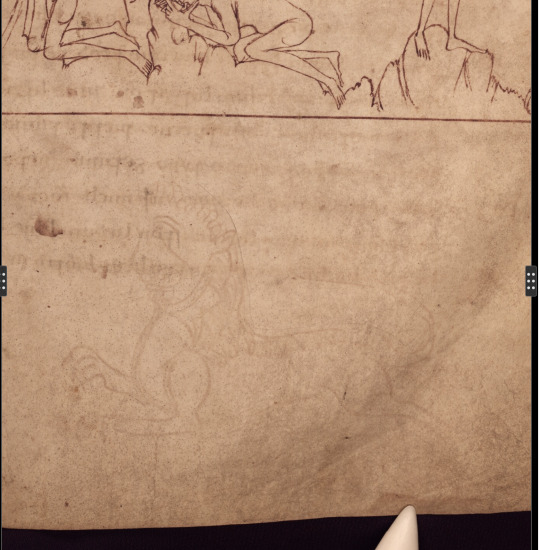
Ohlgren, Thomas H. "Five New Drawings in the MS Junius 11: Their Iconography and Thematic Significance." Speculum 47.2 (1972): 227-233. (PDF)
Junius 11, page 36: Eve sees Hell

Zooming in for a closer look on the nipples
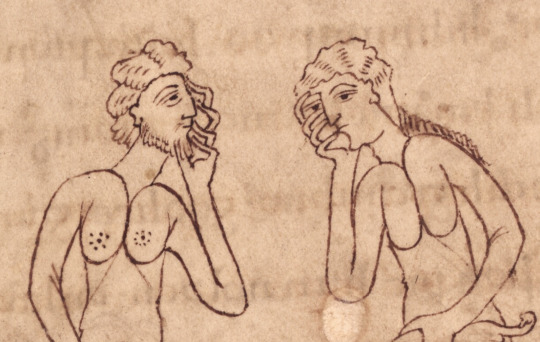
Junius 11, page 34: More nipples

Junius 11, page 39: Even more nipples

Junius 11, page 41: The Serpent

Junius 11, page 44: God scolding Adam and Eve

Junius 11, page 45: Adam and Eve leave the garden

Junius 11, page 46

Junius 11, p. 231: The opening of Christ and Satan, with a horizontal crease through the middle of the page
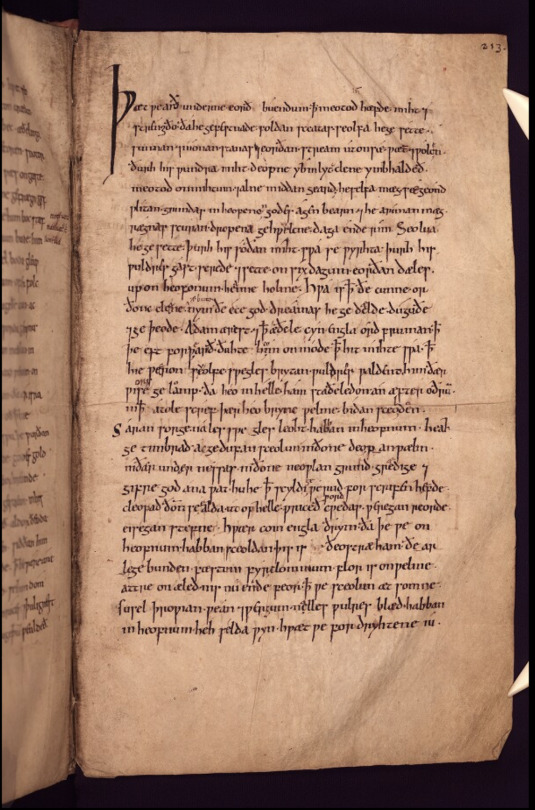
Junius 11, page 161: Repaired with sewing

Junius 11, page 61: Enoch melting into heaven "like a butter sculpture"

Junius 11, page 66: Noah's Ark

Junius 11, page 65: Building the ark
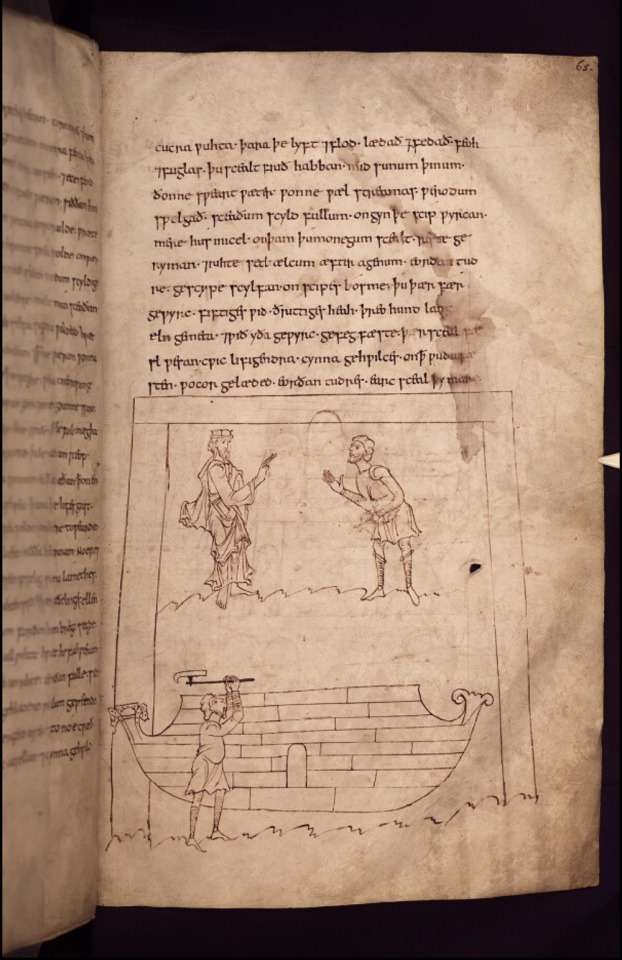
Junius 11, page 2: Zoomed in on Aelfwine
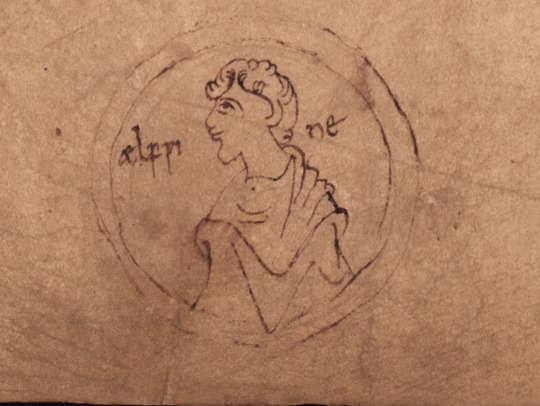
Junius 11, page 230: Metallurgical sketches
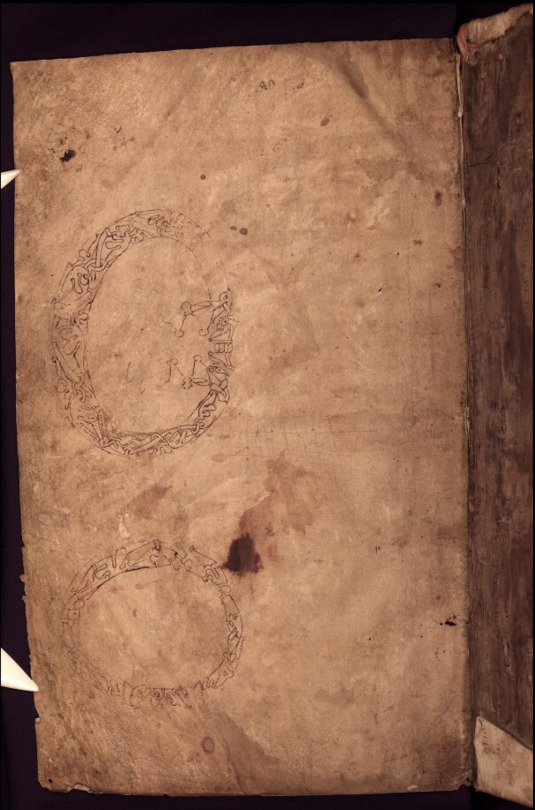
Junius 11, page 225: Unfinished decorative square
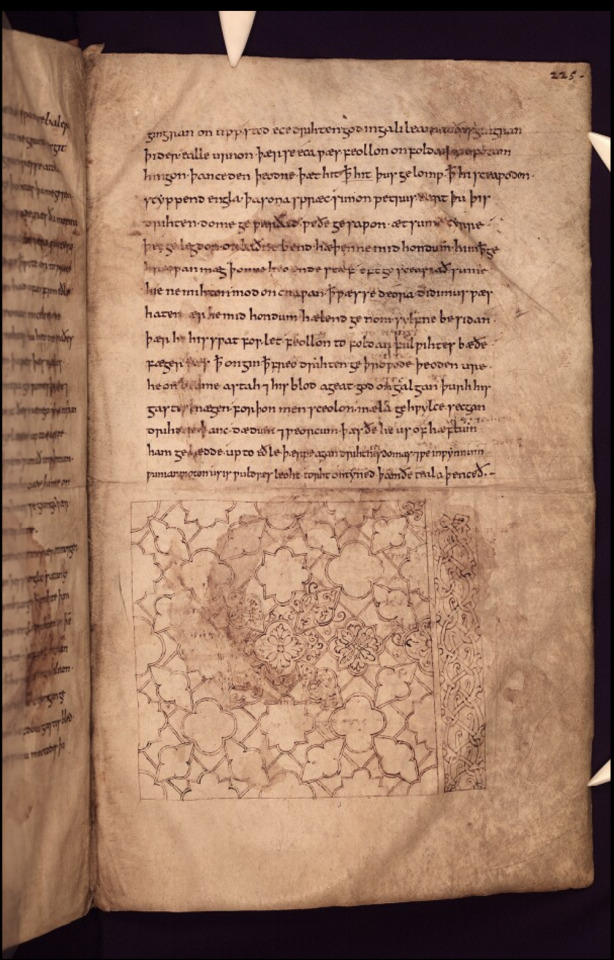
Cotton MS Tiberius B V, folio 87v: Jannes and Jambres (Wikipedia page)
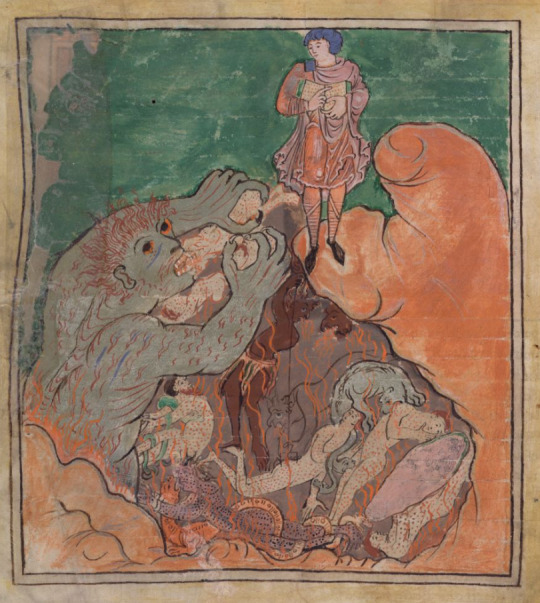
Drag Me to Hell movie (page on Wikipedia)
#medieval#manuscript#old english#junius 11#art history#poetry#genesis#exodus#Jannes and Jambres#book history#rare books#inside my favorite manuscript#imfmpod#podcast
3 notes
·
View notes
Text
New podcast episode! I’m really excited about this one!
Episode 17: Kathryn Maude on politics, the queen as evangelist, and the 11th century Encomium Emmae reginae

British Library Add MS 33241, fol. 1v
In Episode 17 of Inside My Favorite Manuscript, Dot and Lindsey chat with Kathryn Maude about the 11th century Queen Emma, who was married to and had children with both the English king Æthelred the Unready and his successor the Danish king Cnut the Great. The resulting political situation was complicated, and the Encomium Emmae reginae can help us understand the lines that Emma was attempting to walk as her sons grew into adulthood and prepared to take the throne. The text survives in two copies, the earliest one of which is British Library Add MS 33241, believed to be the copy that was presented to Queen Emma herself. Kathryn walks us through the manuscript and we talk about both the politics and the materiality of this fascinating text.
Listen here, or wherever you find your podcasts.
Below the cut are more photos and links relevant to the conversation.
British Library Add MS 33241, aka Encomium Emmae reginae (digitized online)
Folio 1v, the presentation of the book to Queen Emma, with her sons peeking out from the margin.

A close-up of folio 1v focusing on Emma and her sons.

A close-up of folio 1v focusing on the scribe presenting the book. Note that his hands are covered with a cloth. The son's hand has been added.

A close-up of folio 1v focusing on the curtains

Boulogne-sur-Mer, Bibliothèque municipale, MS 11, miniature of Saint John, folio 107r

Close-up of folio 107r focusing on the curtains. Note Saint John holding the book with a cloth around it.

Copenhagen, Royal Danish Library, Acc. 2011/5, aka Courtenay Compendium, which contains the late 14th century copy of the Encomium Emmae reginae (apparently not digitized)
Doors of Durin, drawn by JRR Tolkien.

The Doors of Durin (Gates of Moria) from the Fellowship of the Ring film by Peter Jackson

Middle Aged Women in the Middle Ages, edited by Sue Niebrzydowski. Gender in the Middle Ages, Volume 7. D. S. Brewer, 2011.
Folio 18r, Sven and Cnut's names are capitalized Half Uncials while the rest of the text is a regular Carolingian script.

Folio 48r, another example. Here Emma's name is capitalized at the top.

A king pointing to the text on folio 46r - "a manicule with a king attached" - with a note written beneath in the later middle ages, probably at Saint Augustine's Abbey in Canterbury.

An ugly manicule (hand pointing at the text), folio 46v.

Folio 5r, a gloss in the margin.

Folio 60r, an emoji in the margin of a couple of eyes to annotate the word oculi (Latin for eyes) in the text.

Close-up of the eyes.

Folio 58v, the parchment has been mended during the parchment preparation process, before the text was written.

Folio 54r, space was left for initials that were never added (the penciled M is probably contemporary but was never decorated)

Folio 2r, the first page of text, featuring a zoomorphic initial (i.e., an initial in the shape of an animal, in this case some sort of dragon and a fish eating each other) and colorful capitals.

Folio 8r, a zoomorphic initial R made of more critters eating each other. Good for a tattoo?

Folio 19v. "Explicit Lib[er] I" means the end of book 1, and "Incipit Secundus" means the beginning of [book] two (the second book).

Folio 50v, featuring Lindsey's ugly manicule

A close-up of the manicule

The Annunciation of Mary in Boulogne-sur-Mer, Bibliothèque municipale, MS 11

We talked to Brandon Hawk about the Vercelli Manuscript in Episode 7.
A hedgehog in the Luttrell Psalter (folio 19v)! (See it online)

"The Social Centrality of Women in Beowulf: A New Context" Dot's very first published article!
#medieval#manuscript#medieval manuscript#early england#queen emma#latin#kingship#queenship#parchment#politics#book history#art history#podcast#imfmpod#inside my favorite manuscript
102 notes
·
View notes
Text
🎉🎉🎉 NEW PODCAST EPISODE 🎉🎉🎉
Alex West on the poetry of ascetics, Sundanese, and palm leaf manuscript culture

A leaf from Bodleian Library MS Jav. b.3. (R), a manuscript from Indonesia written on palm leaves.
In Episode 16 of Inside My Favorite Manuscript, Dot sits down with Alex West to talk about Bodleian Library MS Jav. b.3. (R), the only surviving copy of the Sundanese poem Bujangga Manik (written ca. 1470-1500). We start with the story, a tale of an ascetic who travels around the island of Java searching for spiritual transcendence, and along the way we discuss the manuscript, religious, and artistic cultures that formed the poem.
Listen here, or wherever you find your podcasts.
Below the cut are more photos and links relevant to the conversation.
Bodleian Library MS Jav. b.3. (R) (digitized online)
Wikipedia page for the poem Bujangga Manik (out of date)
Where is Java?


The wooden box MS Jav. b.3. (R) is stored in:

Folio 7r, a representative view of the appearance of the palm leaf pages. Note the large hole in the center of the page and two smaller ones on the edges - string originally would have been thread through the holes, to hold the leaves together and to enable them to fan out. The text is inscribed, with no ink.

A close-up of the center of 7r, so you can better see the inscribed writing.

Folio 7v, the other side of 7r.

Dot misspoke during the podcast - the University of Pennsylvania palm leaf manuscripts are from India, not Thailand (the Thai manuscripts are written on paper). Here is one of them, Ms. Coll. 390 Item 82, Āhnikaprayoga, a digest of Hindu rituals from various sources written in 1822. In Sanskrit. Records here and here.
Front cover:

Folios 1v (top) and 2r (bottom)

An example of an inscription: The stone inscription of Kalasan, 778/779 ce, Central Java. National Museum of Indonesia, Jakarta, inv. no. D.147. Photo OD 7466, Kern Institute Collection, courtesy of Leiden University Library:

A. J. West, Bujangga Manik: or, Java in the fifteenth century: an edition and study of Oxford, Bodleian Library, MS. Jav. b. 3 (R). PhD Dissertation
Alex West's Medieval Indonesia on Medium.
Alex West on Patreon
#manuscript#medieval#indonesia#sundanese#palm leaf manuscript#bujangga manik#poetry#podcast#inside my favorite manuscript#imfmpod
34 notes
·
View notes